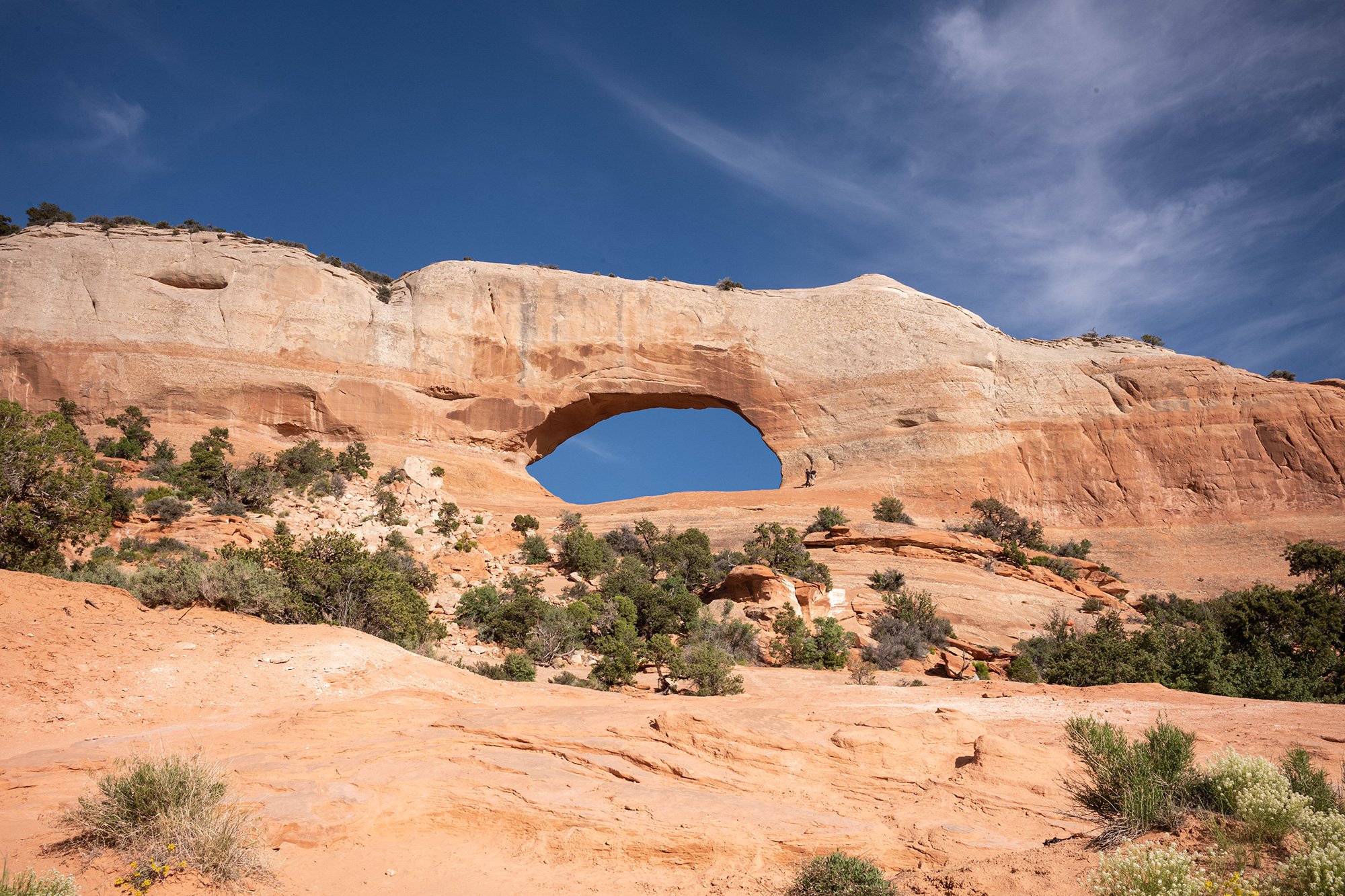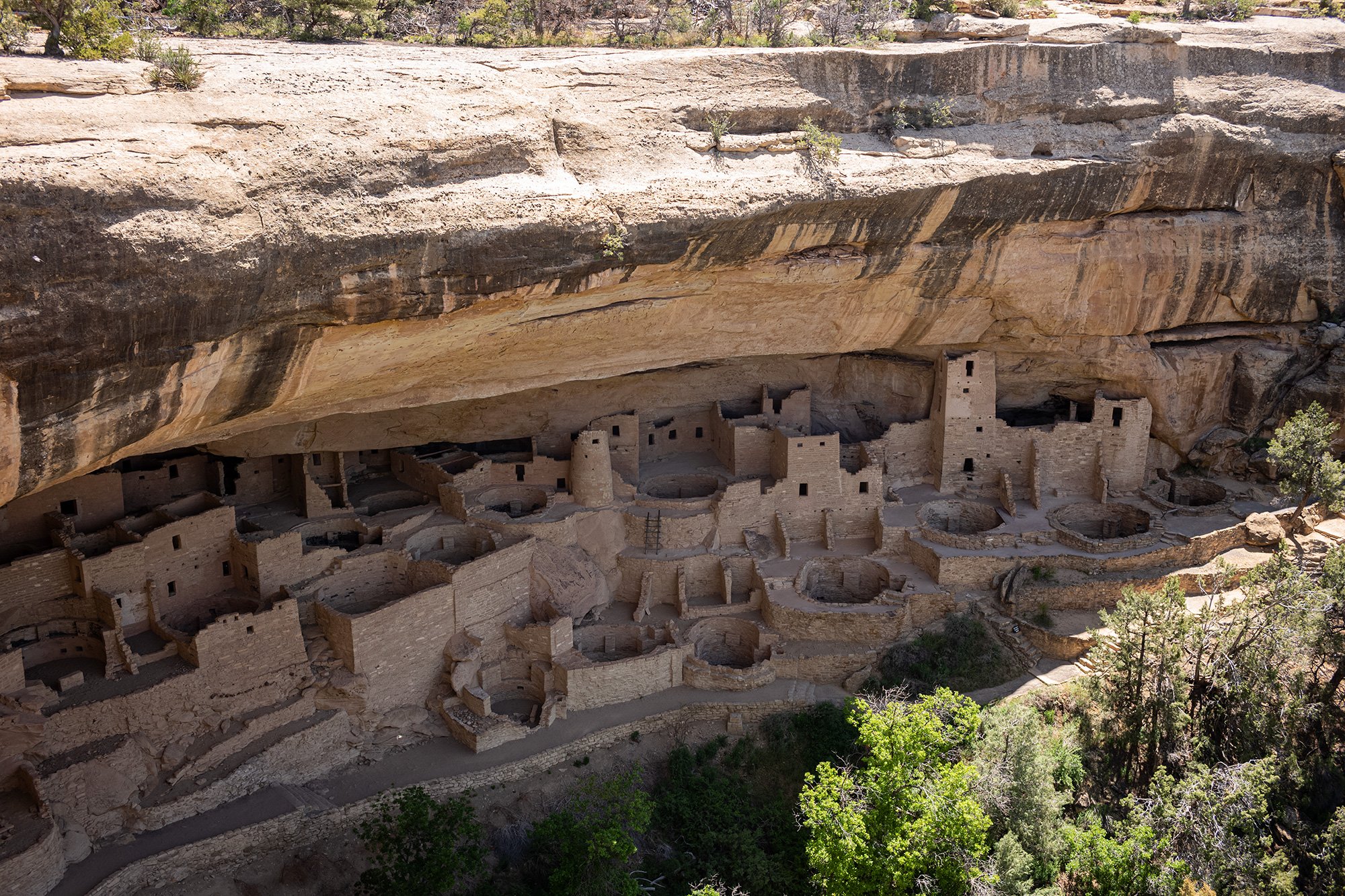
Four U.S. National Parks in five days:
Mesa Verde National Park & Four Corners.
The night before we had agreed to sleep in and so we were well-rested by the time we make it down to breakfast.
I’m excited because they have a self-making pancake machine. I take a photo and send it to my nieces and nephews. It’s one of my favorite inventions.
A number of the staff didn’t speak English, and I practice my rudimentary Spanish. One of the cafeteria attendants’ daughter keeps dogging her steps. Su niña es muy lindo, I tell her. I correct myself: linda. She smiles broadly.
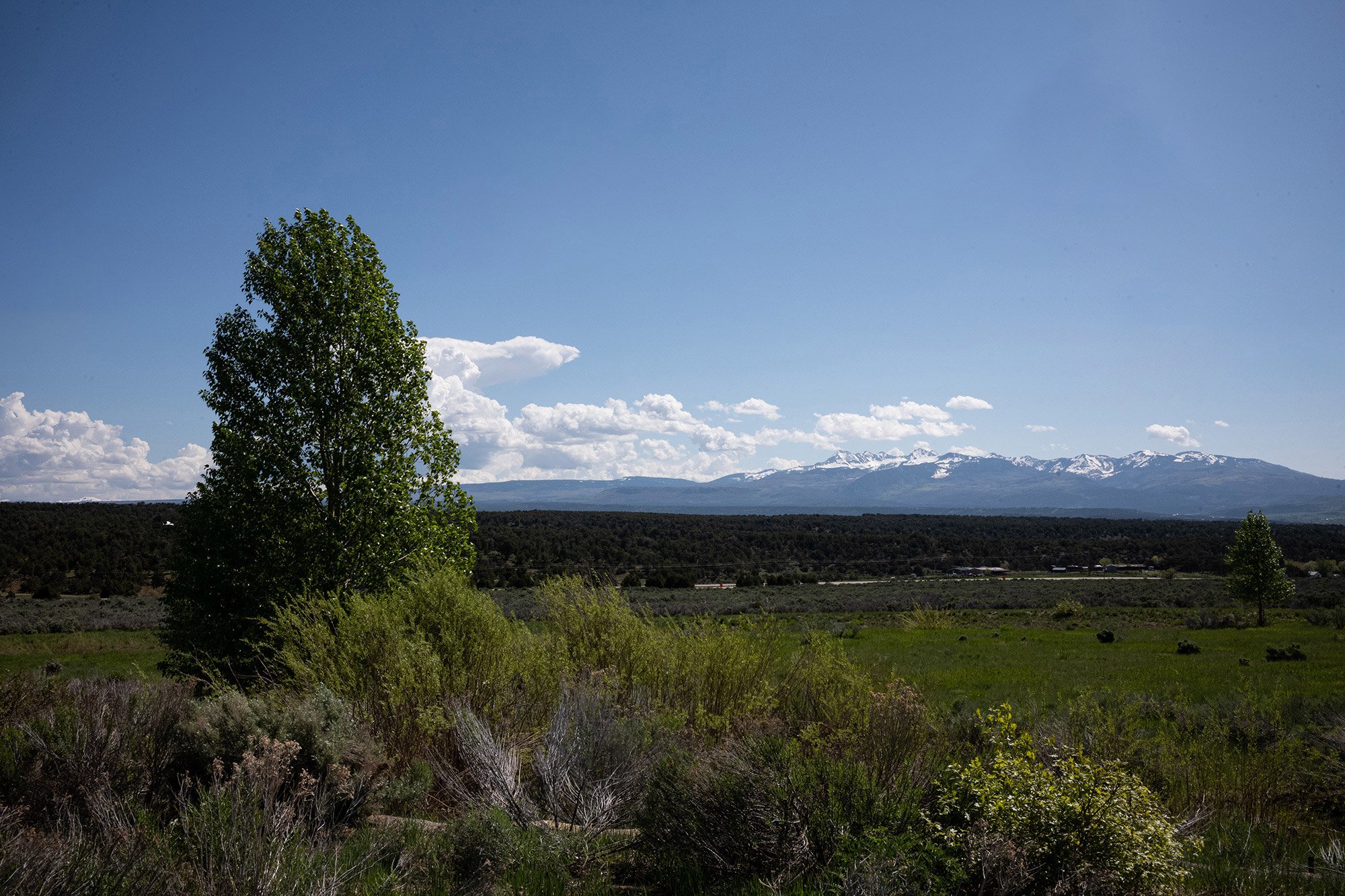
It’s a short drive to Mesa Verde National Park, and we stop at the entrance to take photos in front of the national park sign. Two women are trying to position their car as a camera mount and I ask them if they’d like me to take their photo. One directs me to make sure I get a rock formation in the photo.
After making sure they’re happy with their photos I learn they’re Germans on a two week rod trip to San Francisco. The day before they drove seven hours from Denver to arrive in Cortez. One lives in Berlin, but the other has resided in Chicago for some time; she’s practically an American. She tells me that when they arrived in Denver her friend from Berlin told her she didn’t like long car rides. Her friend from Berlin interjects. Here, it’s different. In Europe the roads are small and congested; here it’s amazing to look at the vast expanse around you. I couldn’t agree more.
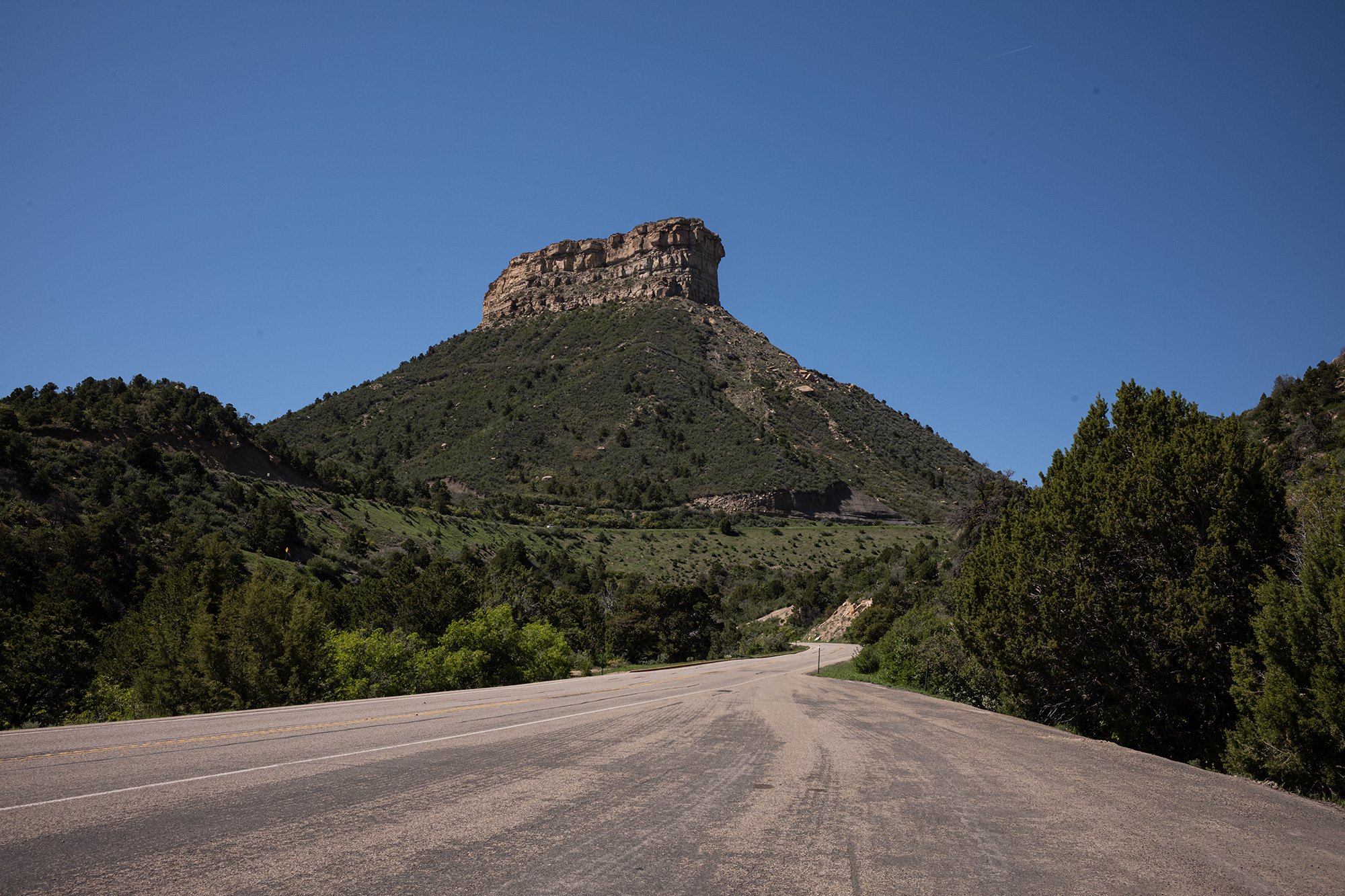
We stop off at the visitor center to get our bearings. It turns out that it’s quite a drive into the park to see the dwellings. The ranger points out the highlights and tells us there’s a restaurant and gift shop midway through the park if we want to stop for food. My aunt remembers the restaurant and tells us that she ate there last time they visited the park.
Outside I run into one of my new German acquaintences. She’s carrying a camera with a huge telephoto lens. She tells me she’s a birder. I reflect on the fact that I haven’t seen so many birds and she tells me I have to listen. I close my eyes; suddenly they are all around me.
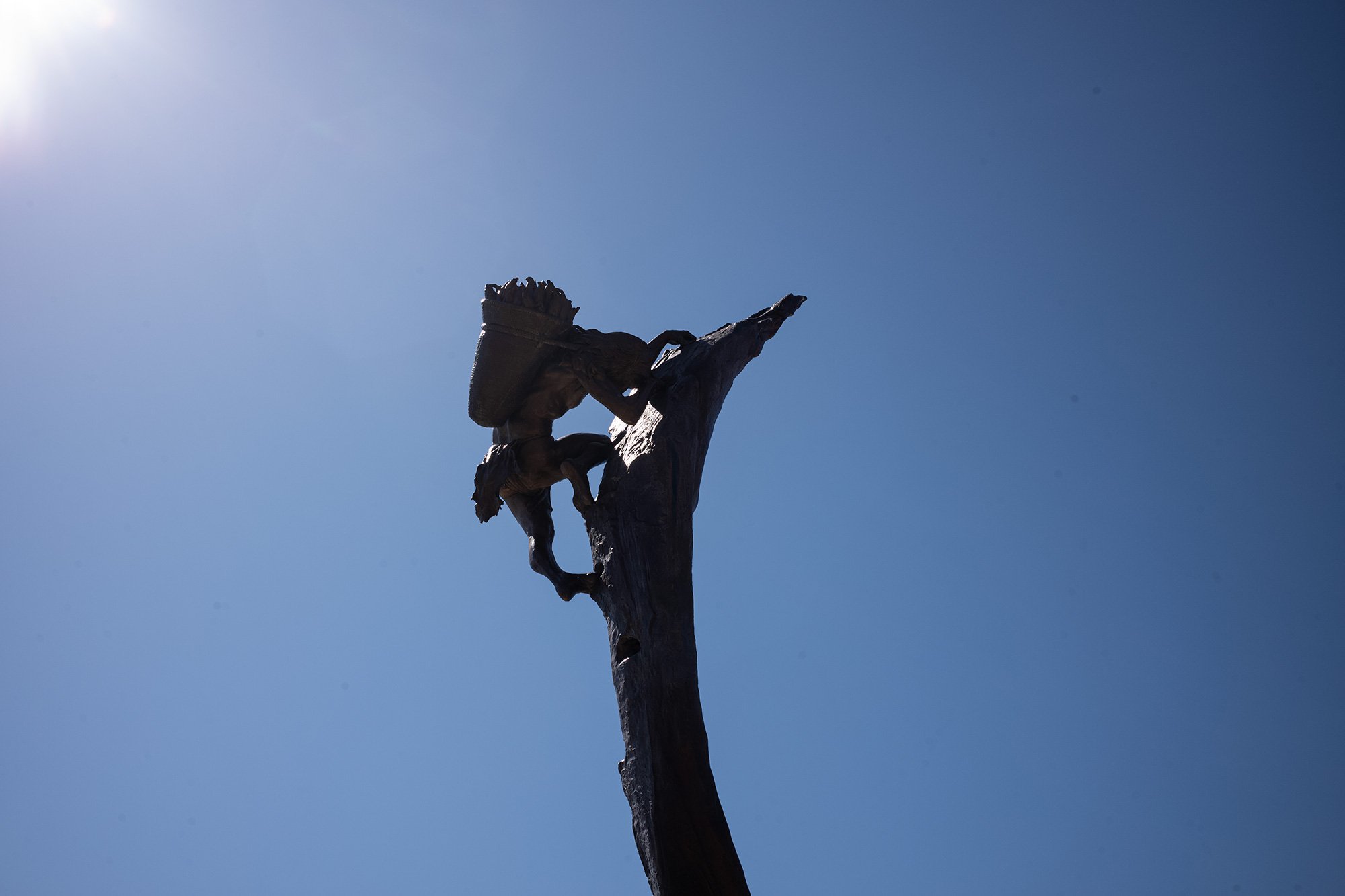
En route to Cliff House, we stop by the Montezuma valley overlook to get a view of the valley on the other side from where we were staying. There’s a formidable rock face that casts shadows on the remnants of a path that seems to run alongside it. A plaque shows a photo of an old car attempting to drive the route.
As we drive further, there’s construction on the road. A worker holds up a sign for us to wait. Soon we see a truck driving towards us with a line of cars in tow. Once it’s reached our side, it turns around to lead us back the other way, obviating the need to radio from one end of the blocked road to the other. It’s an ingenious solution, but I wonder if the driver gets bored driving the same stretch of road back and forth throughout the day.
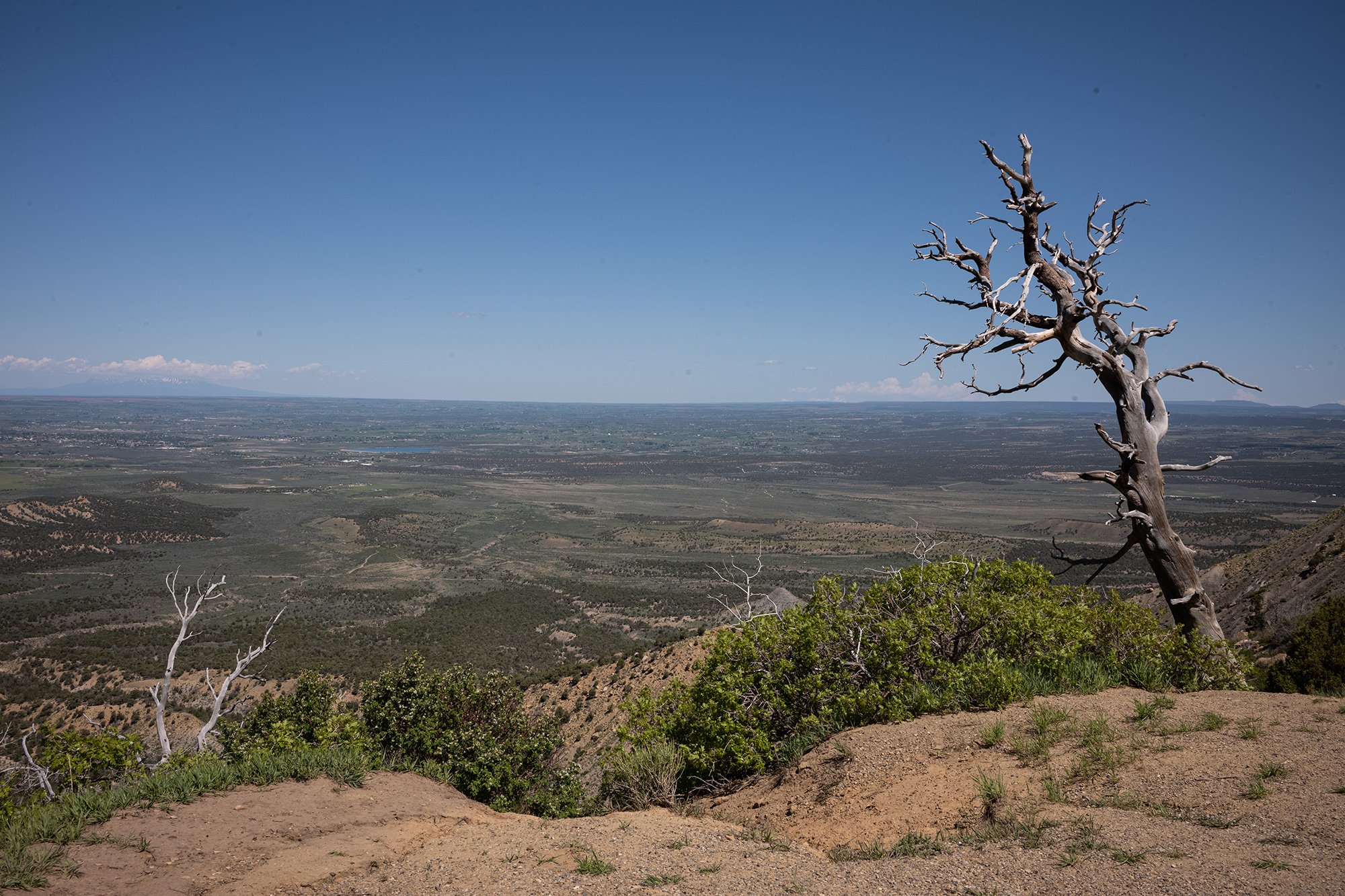
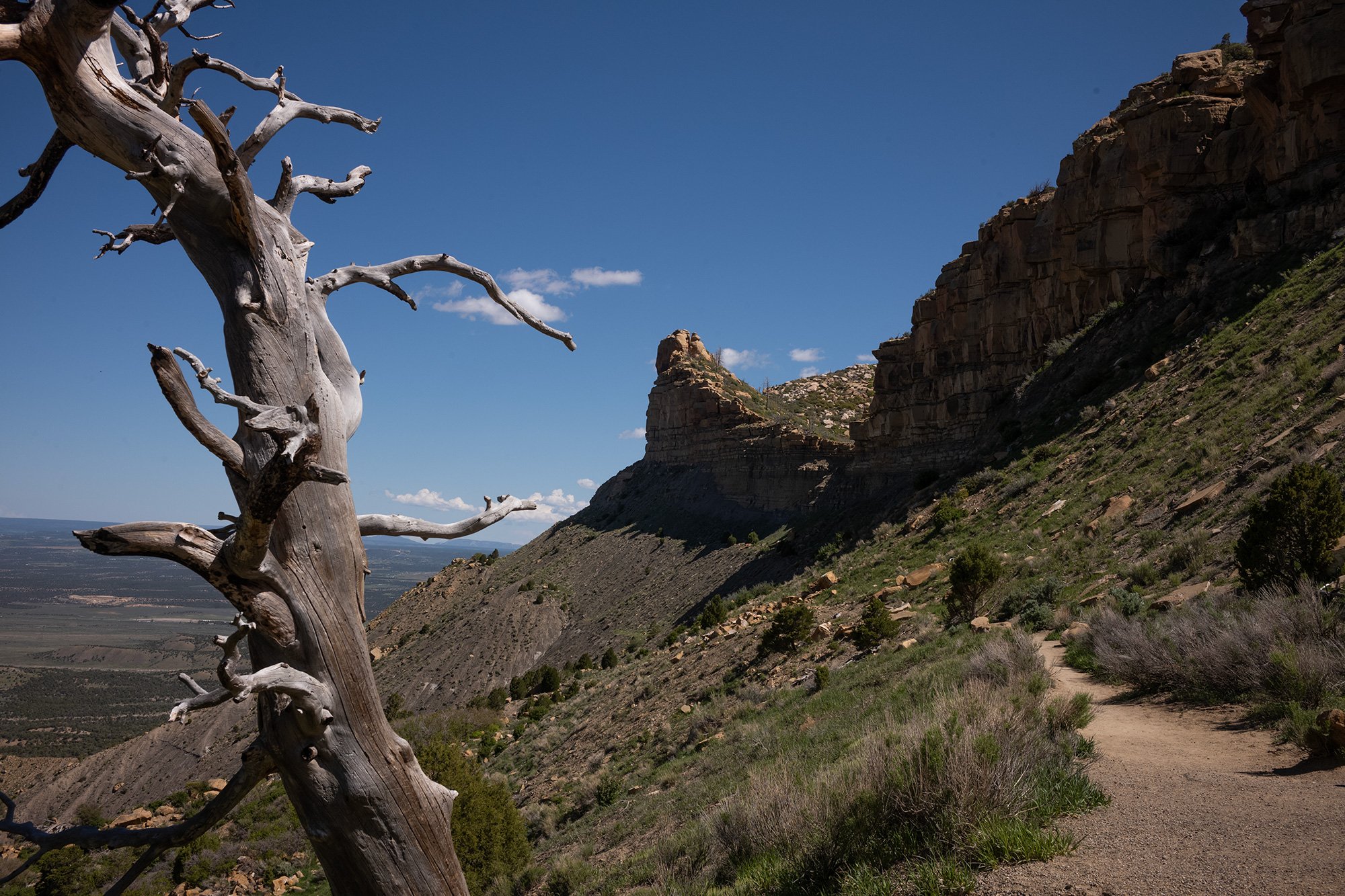
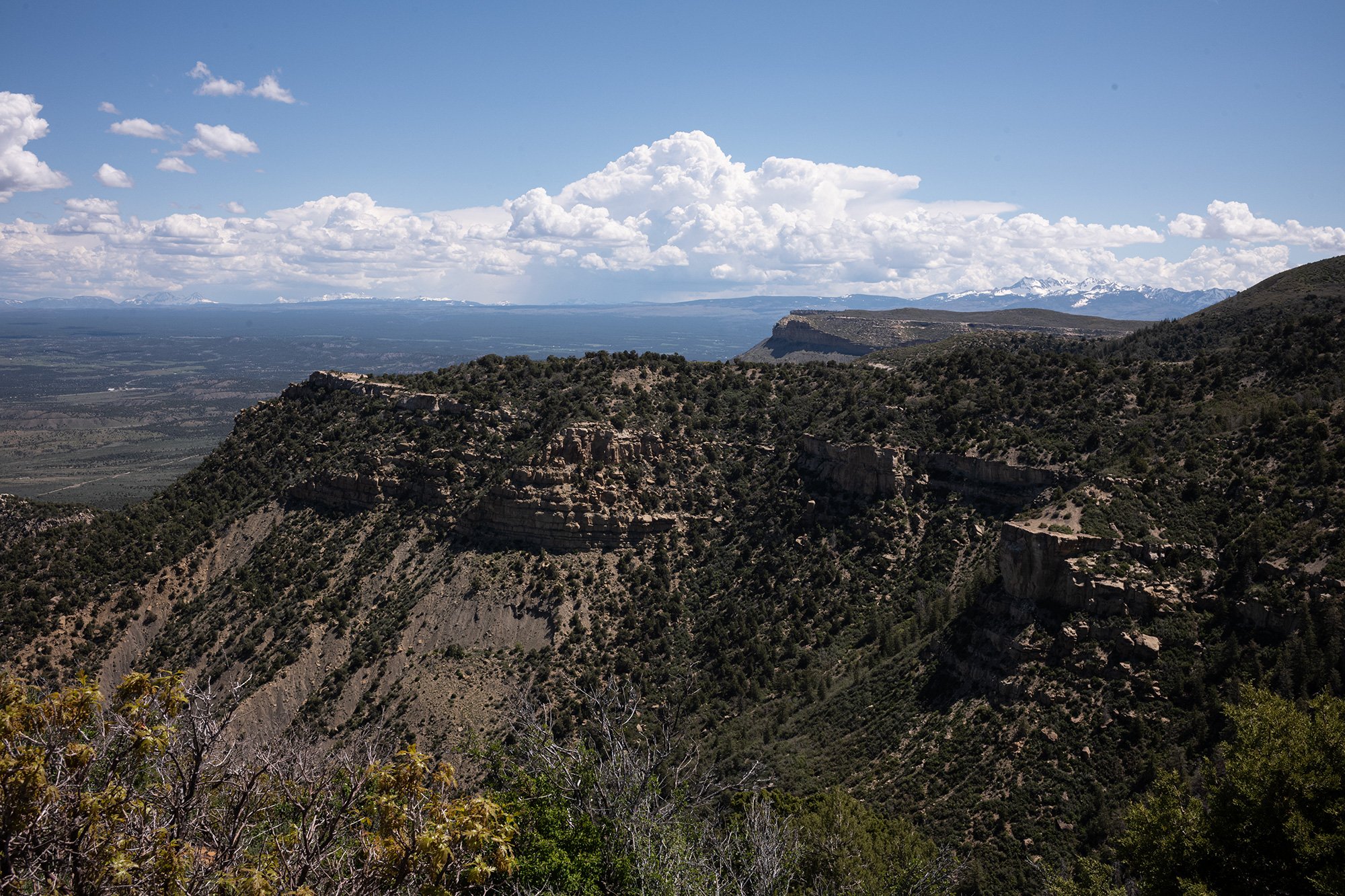
At the Cliff House we run into our new German friends They tell me we’re lucky; we just missed a group of students who were visiting on a class tour. They tell me they were super loud. I ask if they were Americans. Of course they were Americans, Chicago retorts. I laugh.
Perhaps the most known dwelling at Mesa Verde National Park, the Cliff House was built by Ancestral Pueblo people 700 years ago from sandstone, wooden beams, and mortar. Comprised of over 150 rooms and 20 kivas, or rooms for religious rituals.
We can only look at the buildings from afar; ranger tours must be booked in order to hike down to them and they fill up fast. Our decision to come was a last minute decision, as most of the trip is. We’re taking advantage of where we are and taking what opportunities we can to visit the parks along the way.
A bird flies by and I ask Chicago what it is. She tries to take a photo with her camera but it’s too fast. It’s a bird of prey, she tells me. That’s the best I can do. Across the canyon a vulture alights on the ridge. It’s just a vulture, she says.
They leave before us and say goodbye. We’ll see you at Balcony House.

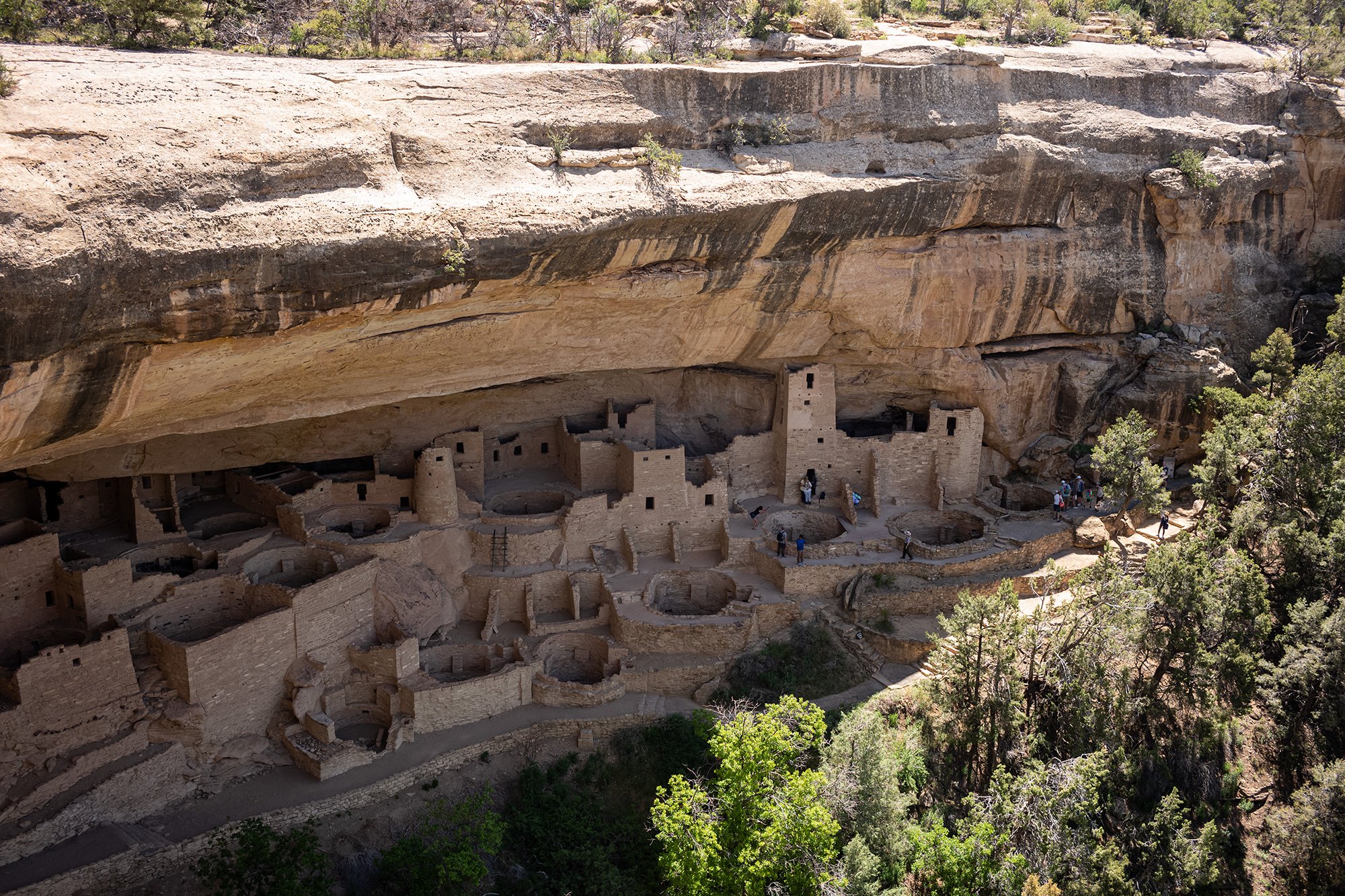
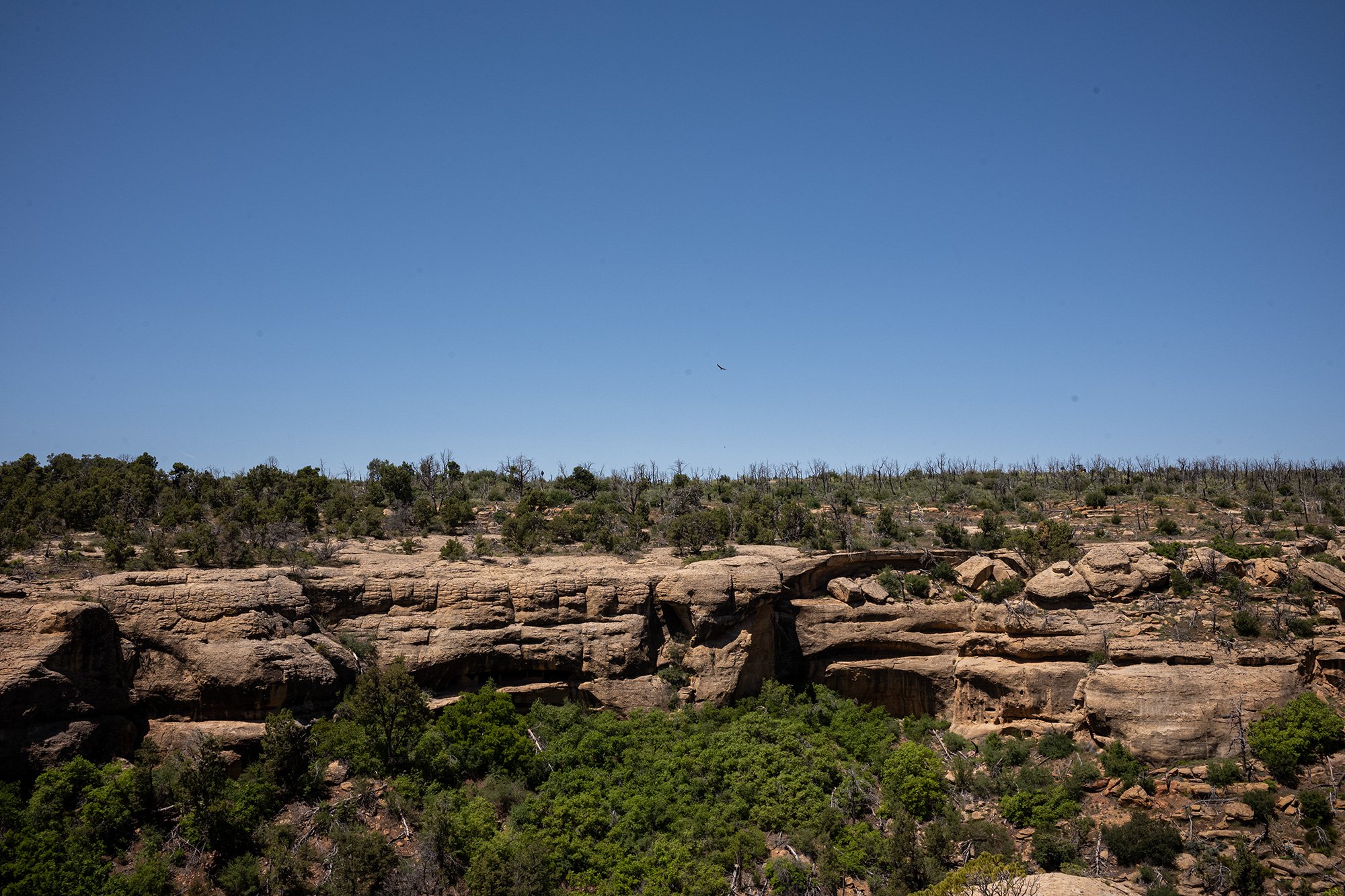
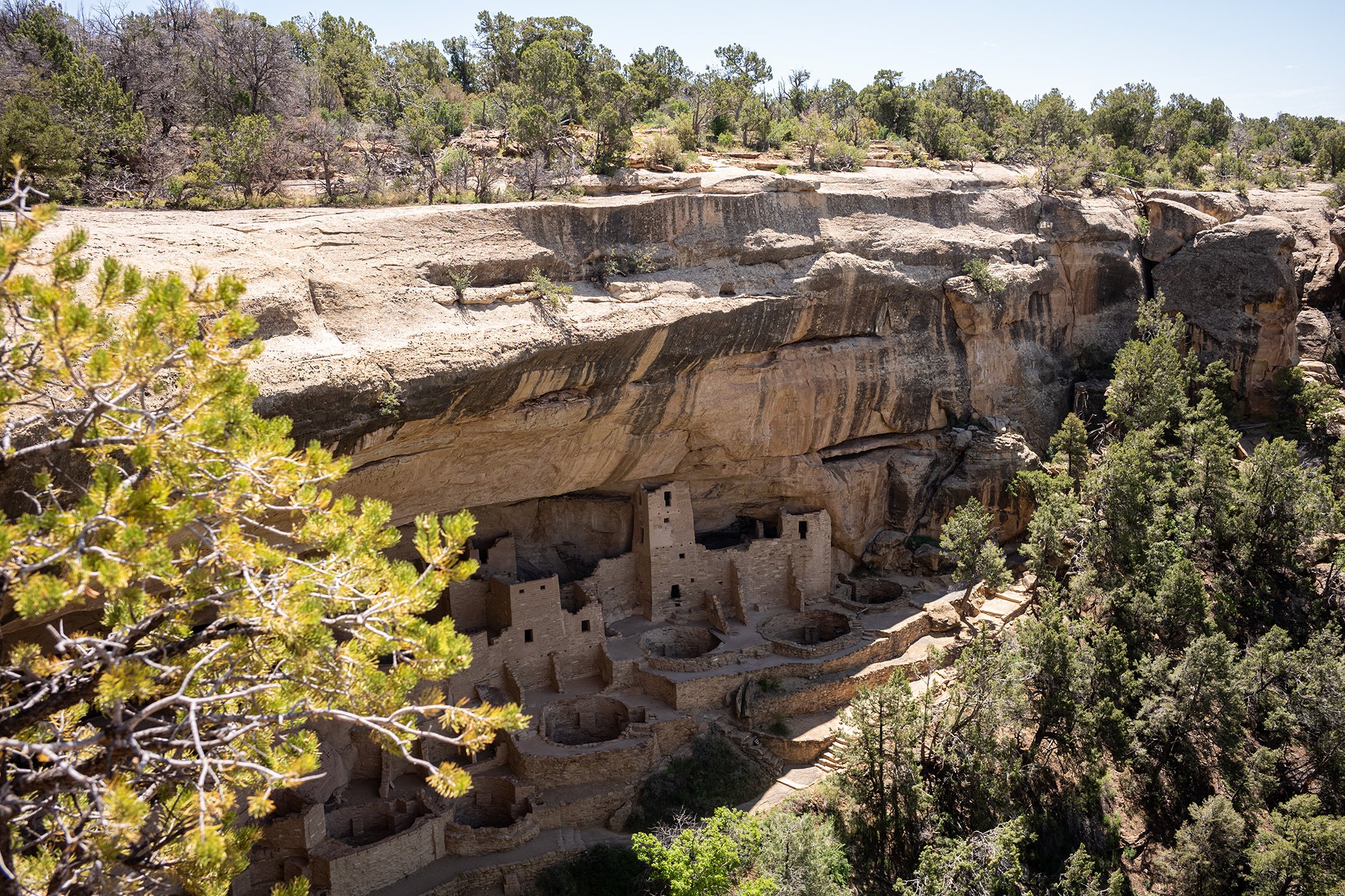
We drove on stopping at one overlook and then another. Plaques pointed out the various dwellings set in the cliffs on the opposite side of the canyon. At Balcony House a plaque stated that we couldn’t see it; it was beneath our feet. It would take a guided tour to see it up close. Across the canyon we could see workers. The road to the other side was closed; under construction.
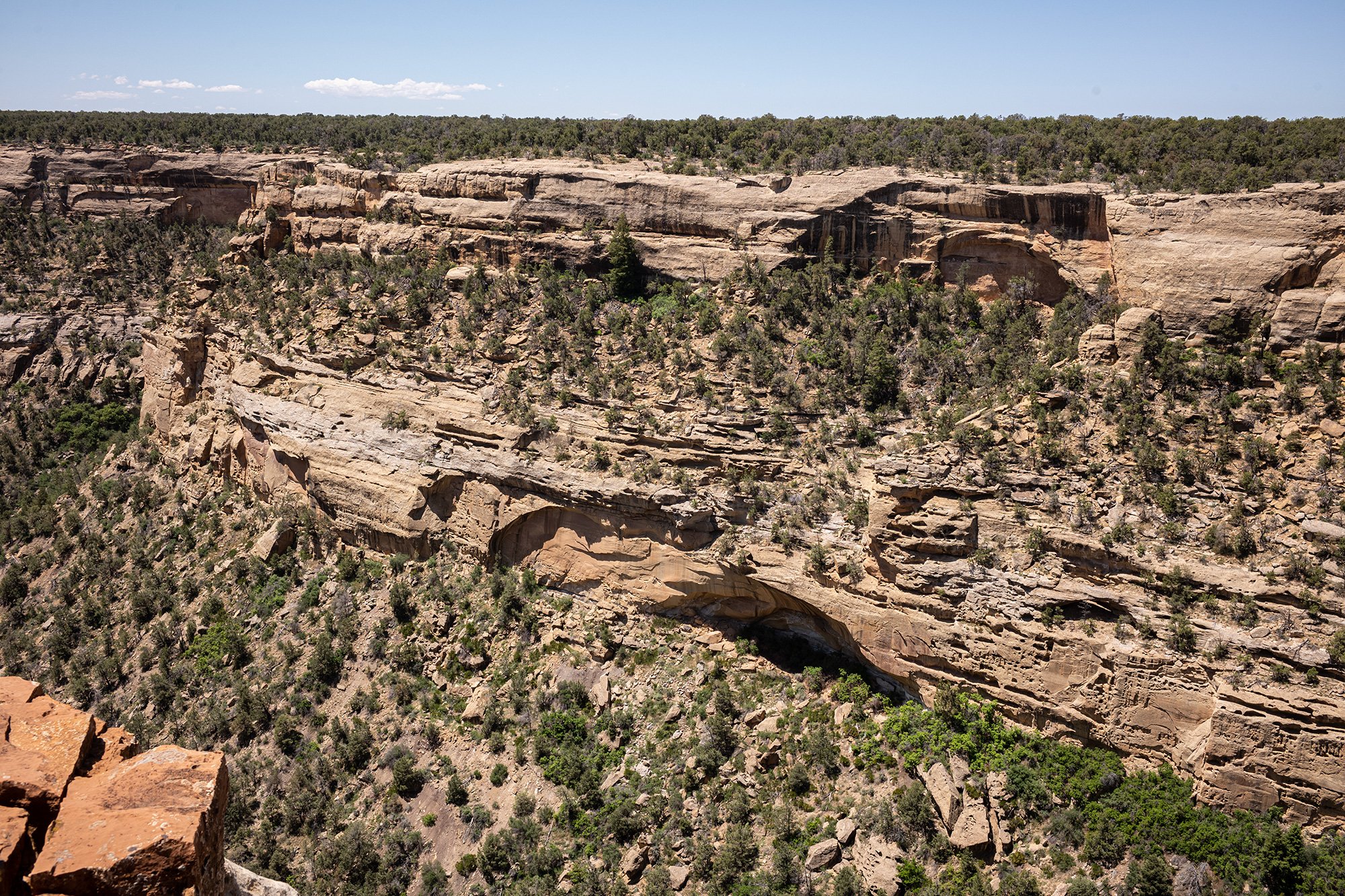
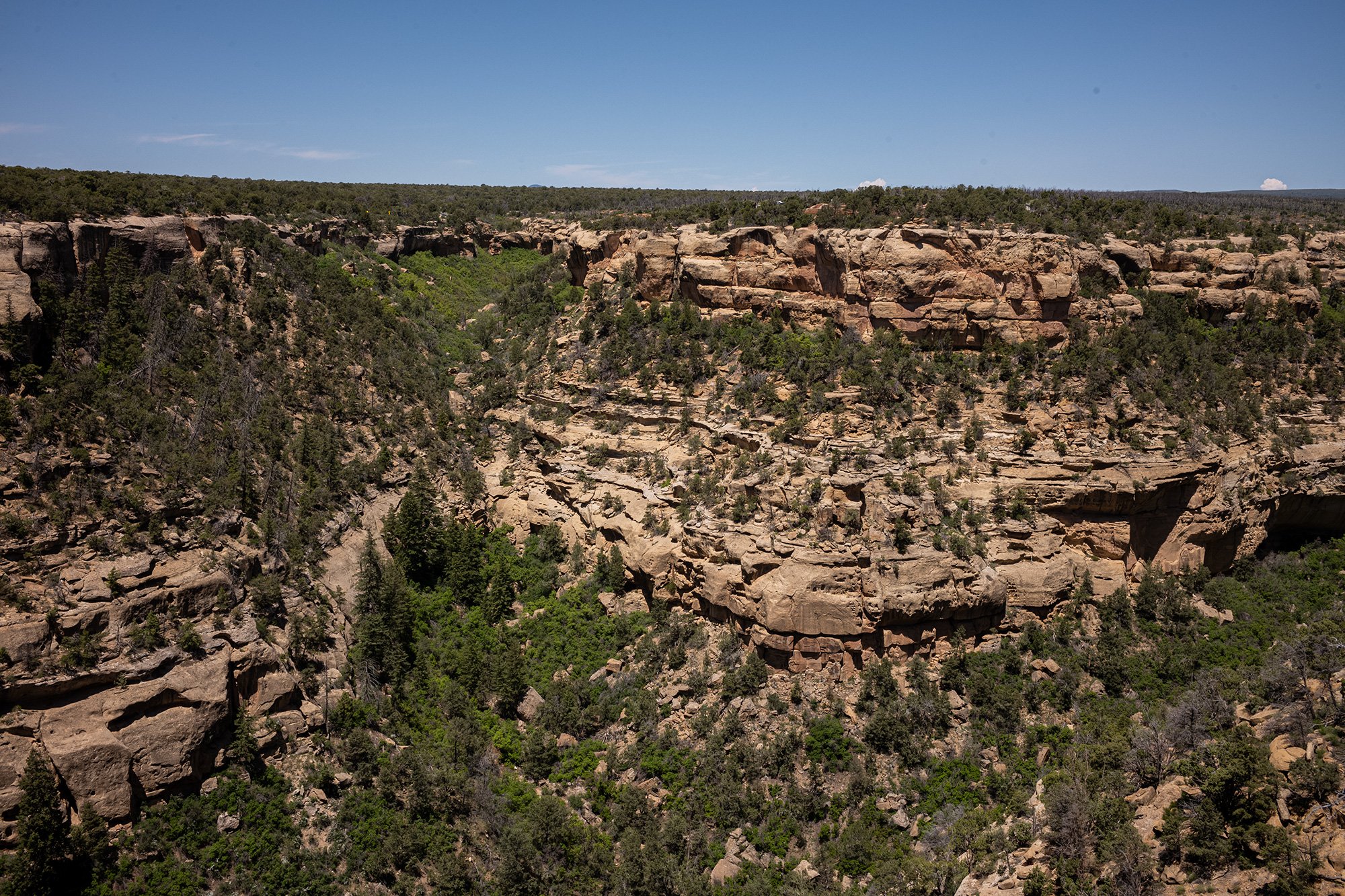
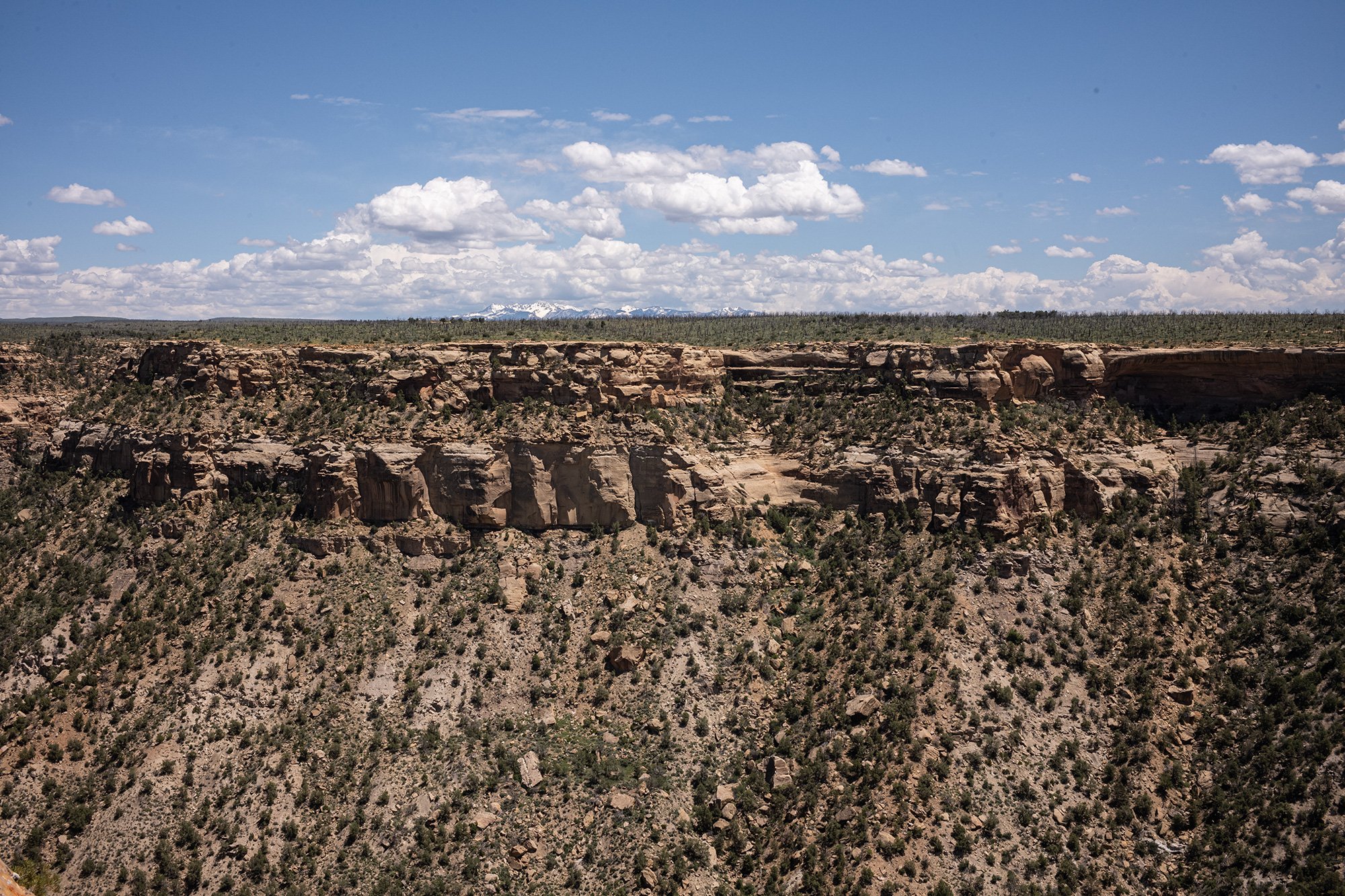
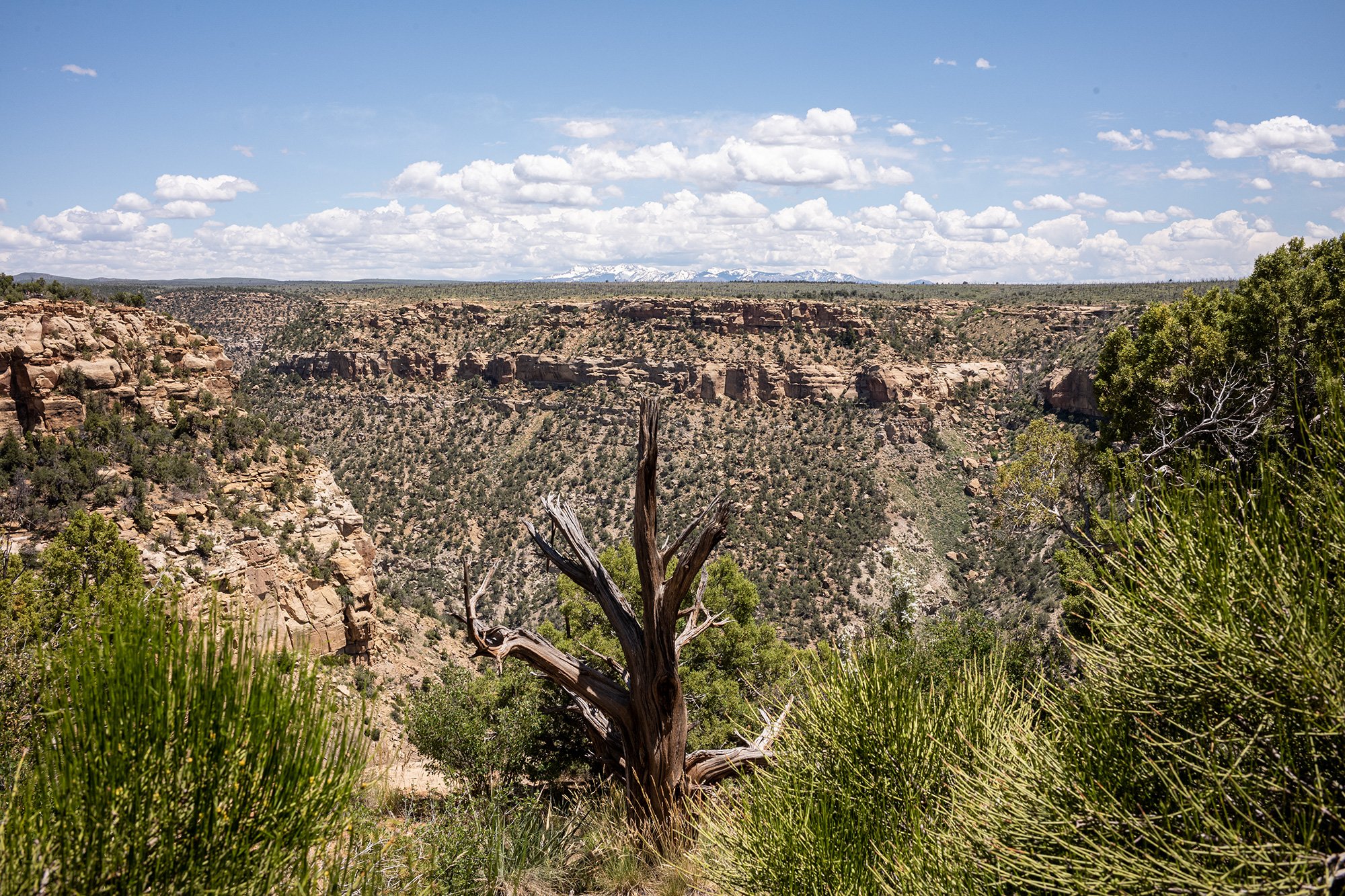
On the way back to the park’s entrance we stop in the cafeteria for lunch. We order sandwiches and eat before touring the gift shop. My aunt buys a hat; my mother buys a t-shirt.
Leaving the park we stop at one more viewpoint for the views of the plains below. We trace the route we took to Cortez from Durango. Back in the car we prepare for the drive.

Along the way the landscape changes. The green plains turn to dust and the air becomes deserty. Close to the monument we see some cool geological structure and stop to take photos.

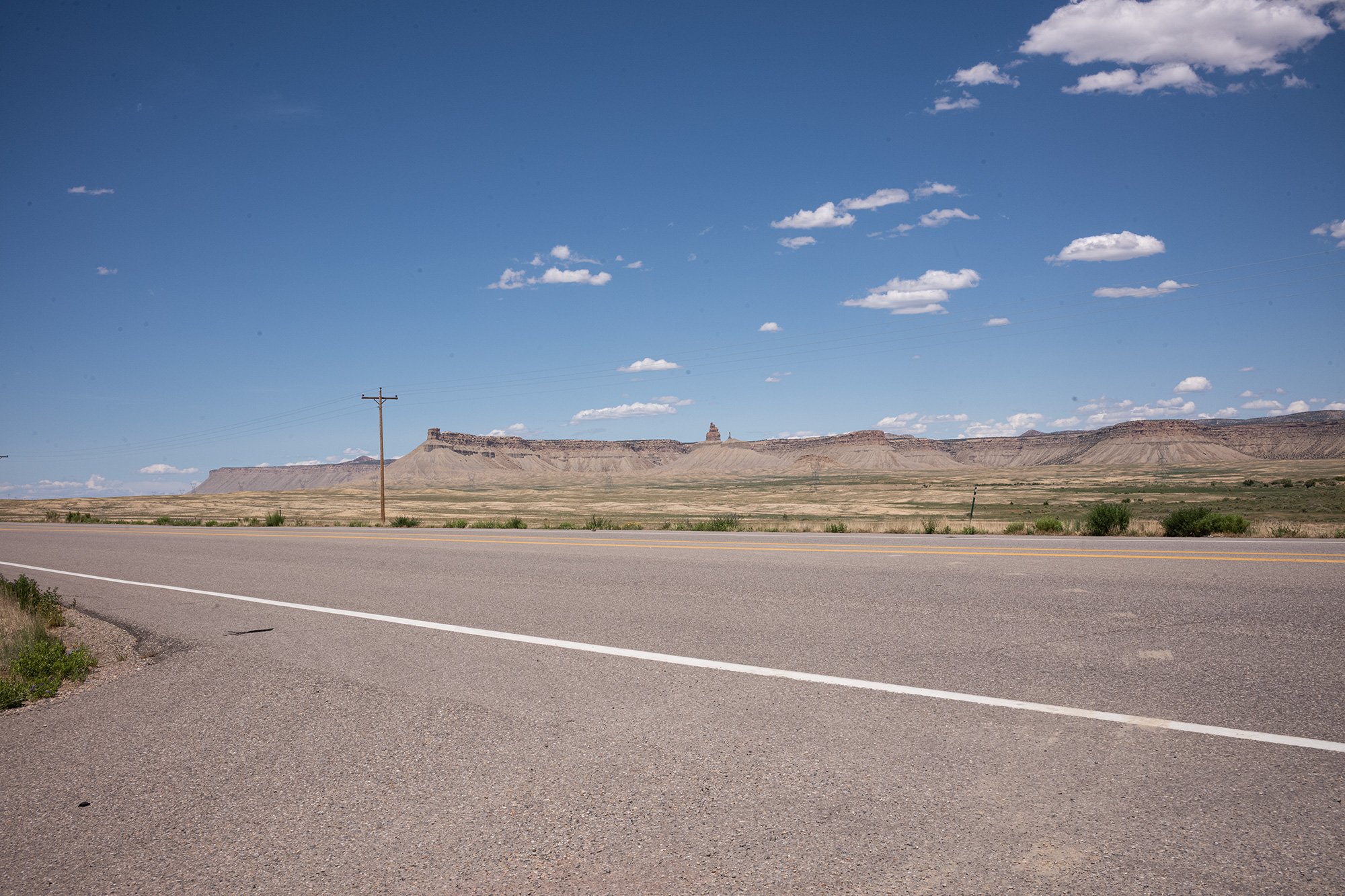
It’s eight dollars per person to enter the tribal park. At first, I’m surprised how desolate the area is and then think to myself “of course it’s in a desolate area.” It’s at the farthest corner of four different states, what else would I expect.
Parking is in a dirt lot before a concrete structure. State flags fly on poles positioned around the circular structure. Inside, various groups wait their turn to pose with the landmark. Families will each choose a state to stand in, others will assume twister poses so that they have a hand or foot in each state. I ask a woman to take my photo and lie across the states, quartered. I thank her and then offer to take her photo. I end up offering to take photos for about a dozen families.
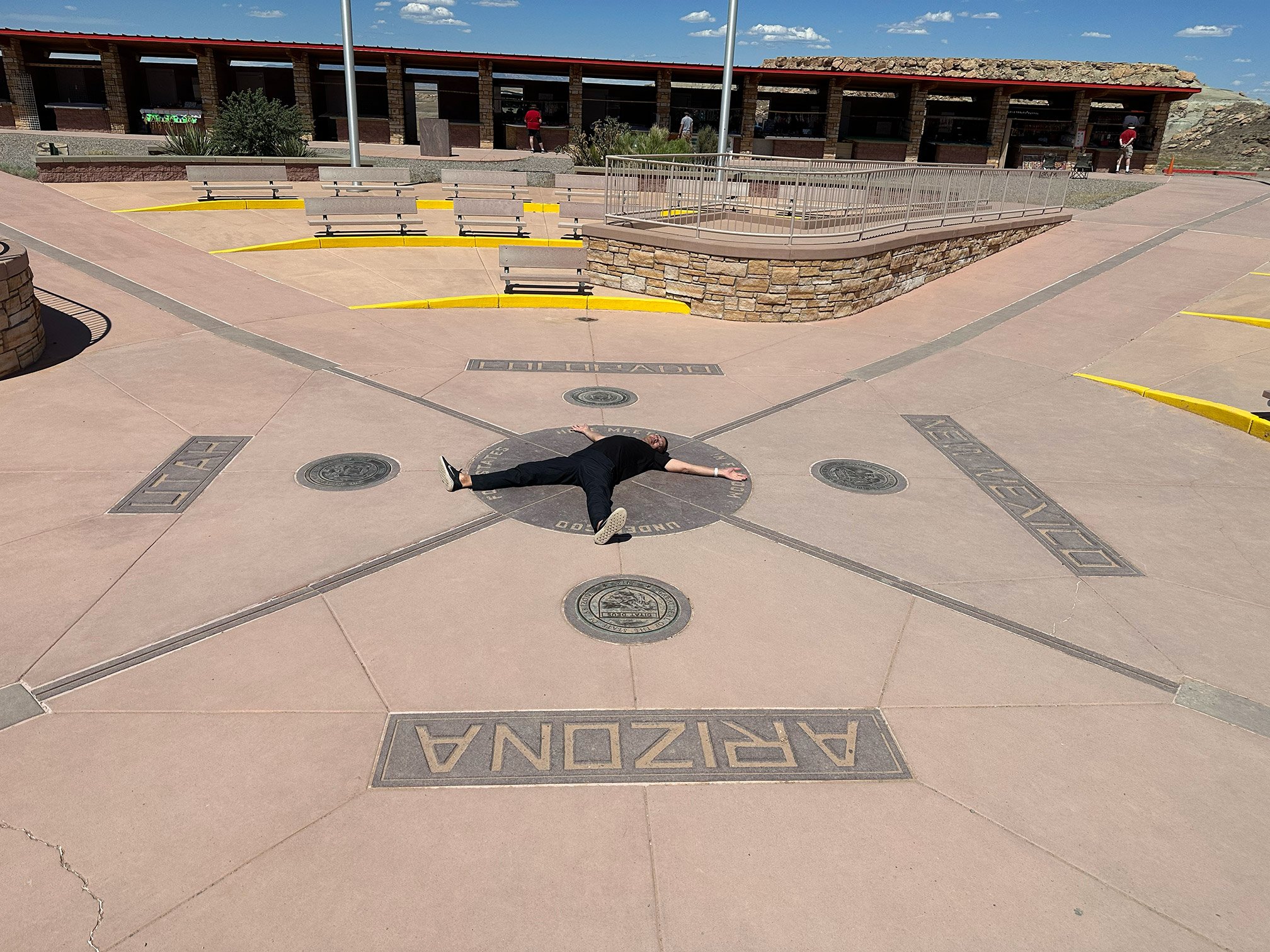
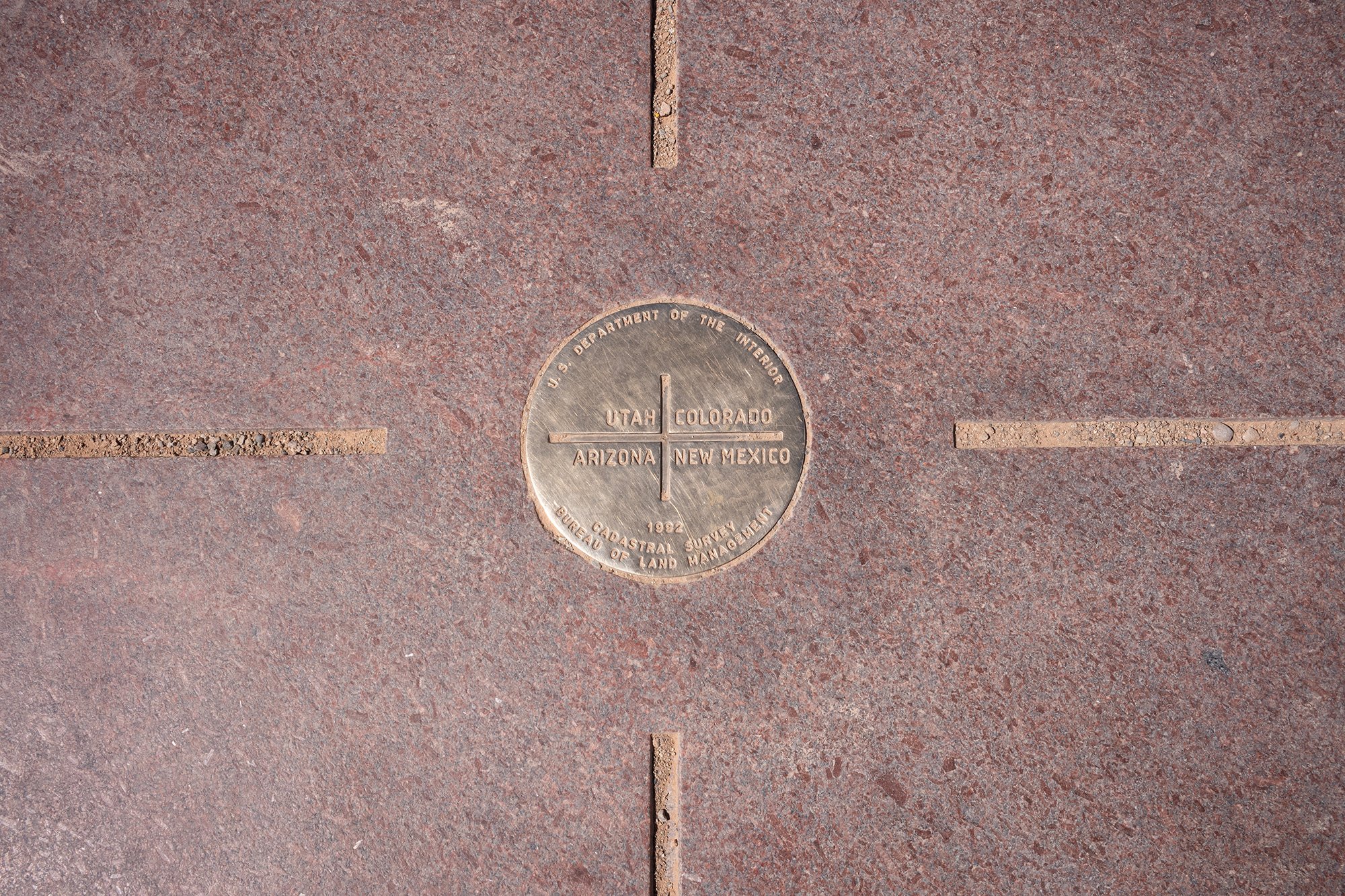

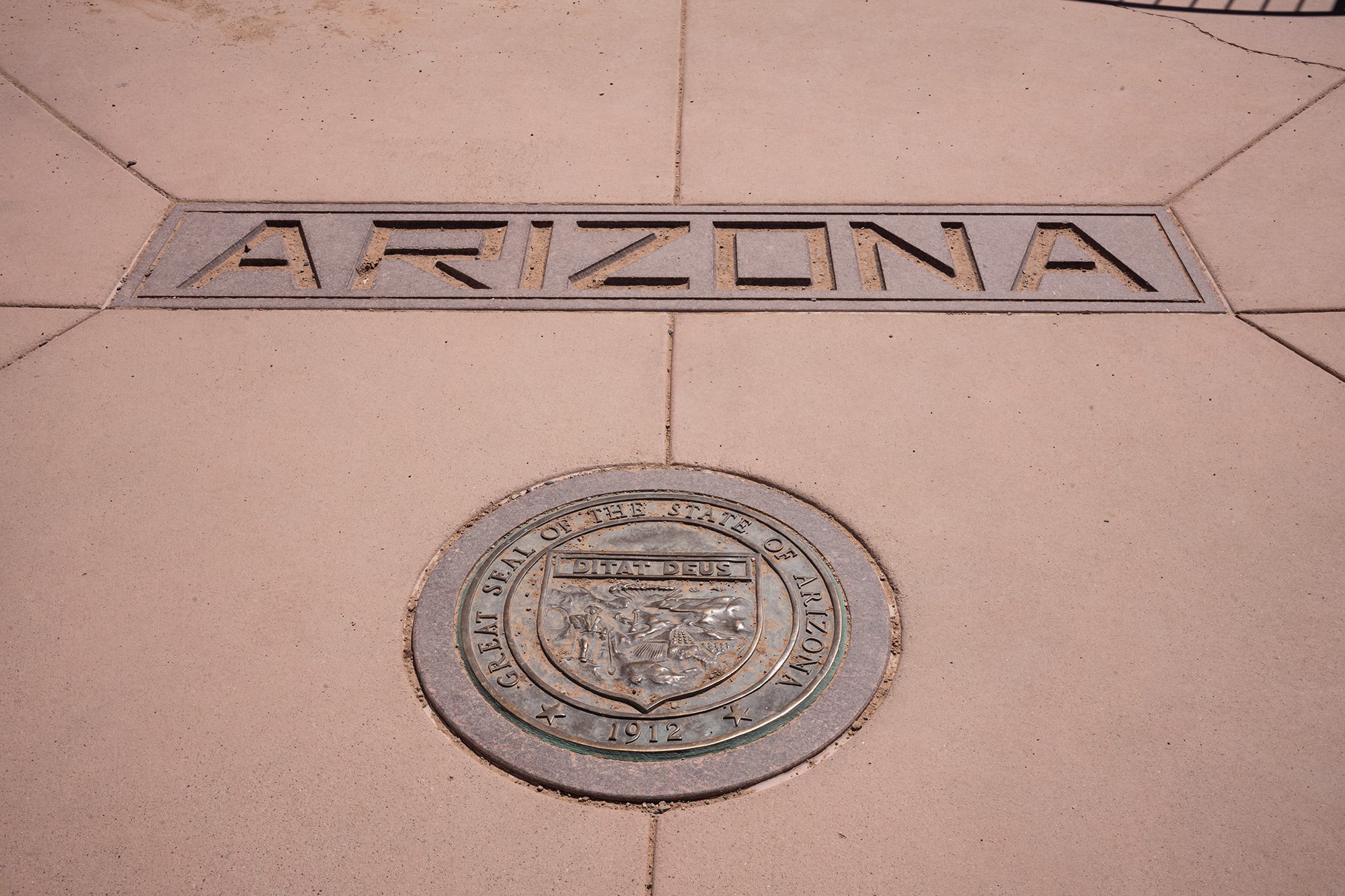
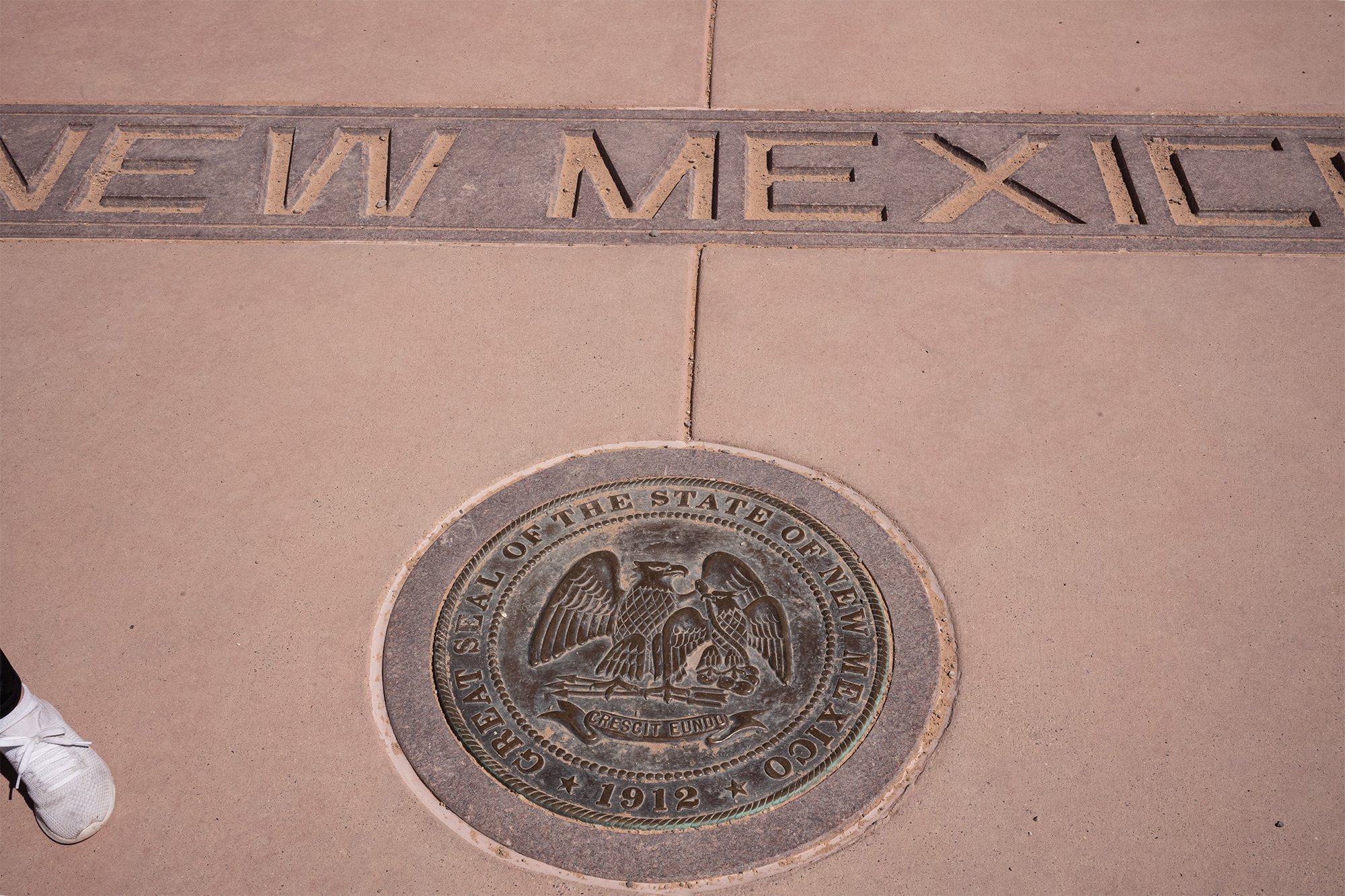

Outside, I stop by Grandma’s Frybread for some fry bread. Ever since I saw it on the map I’ve been wanting to try it. Renata takes me order and tells me it’ll be a minute. She tells me she’s the grandma and that she’s slowly lumbering along. I tell her I’m in no rush and step outside to wait.

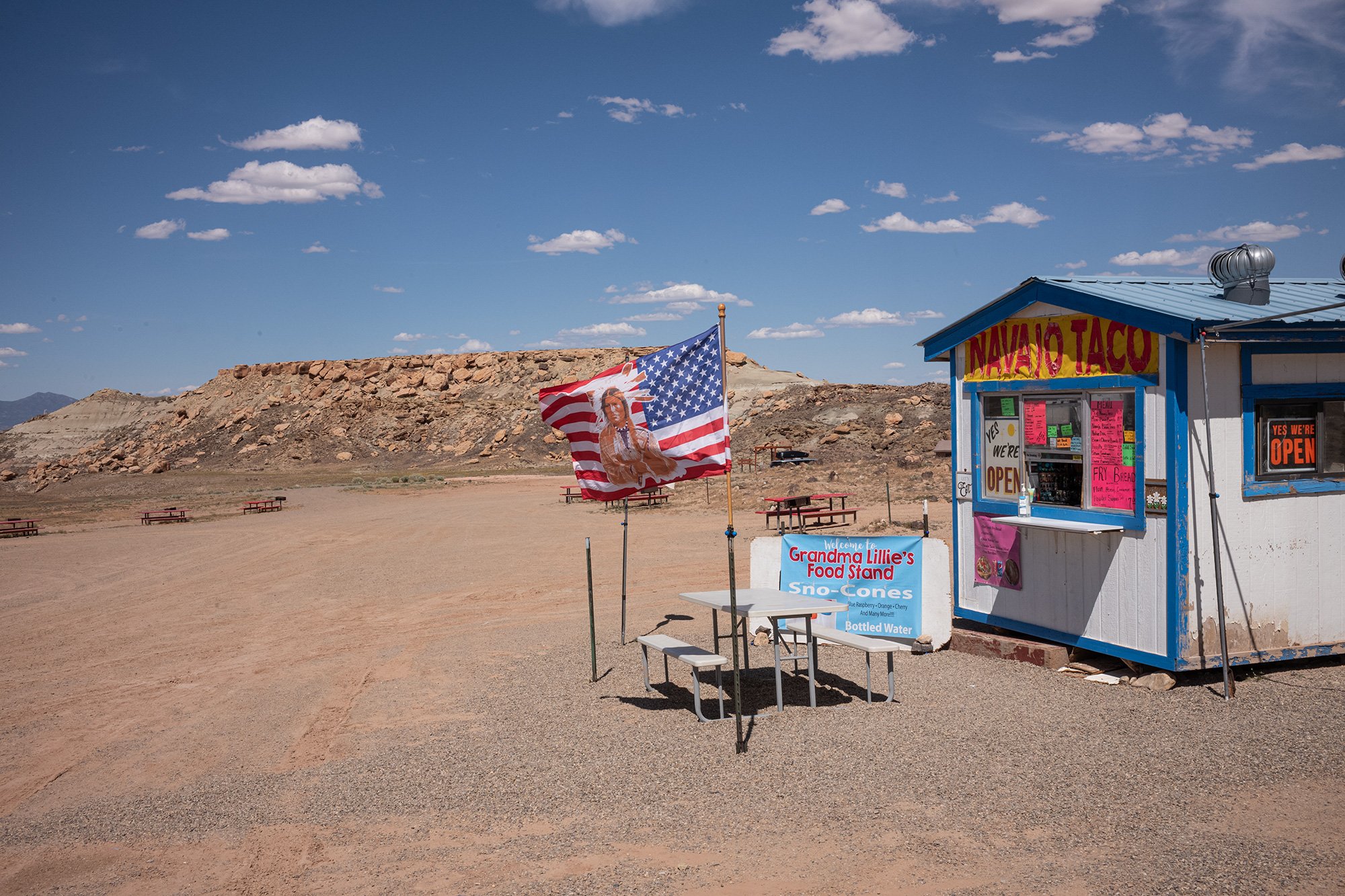
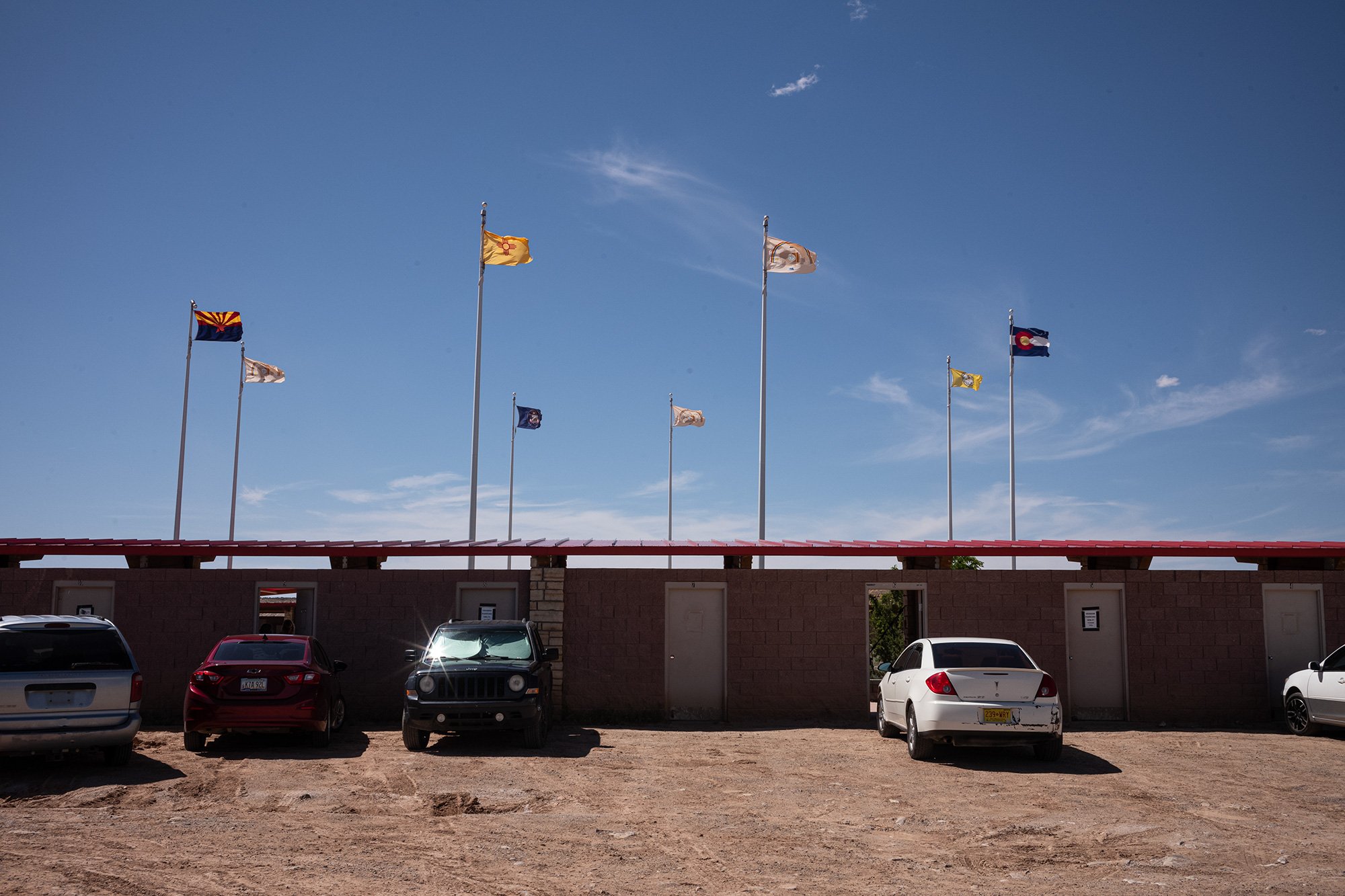
The fry bread is hot and light, coated in cinnamon. I ask Renata what she makes it with. She tells me it’s a simple recipe, it’s just flour, baking soda and salt. I take it back to the car and we split it as a snack. It’s about 150 miles to Moab, and so once again we settle in for a long drive.
As I drive I lament the fact that my cousin isn’t driving. In Patagonia she drove while I took photos. There’s so much beauty we pass and there’s not the room nor the time to stop to take photos of everything. But now and again I can’t help myself and if I see a turnout, I stop for a moment in an attempt to capture the breadth of what’s around us.
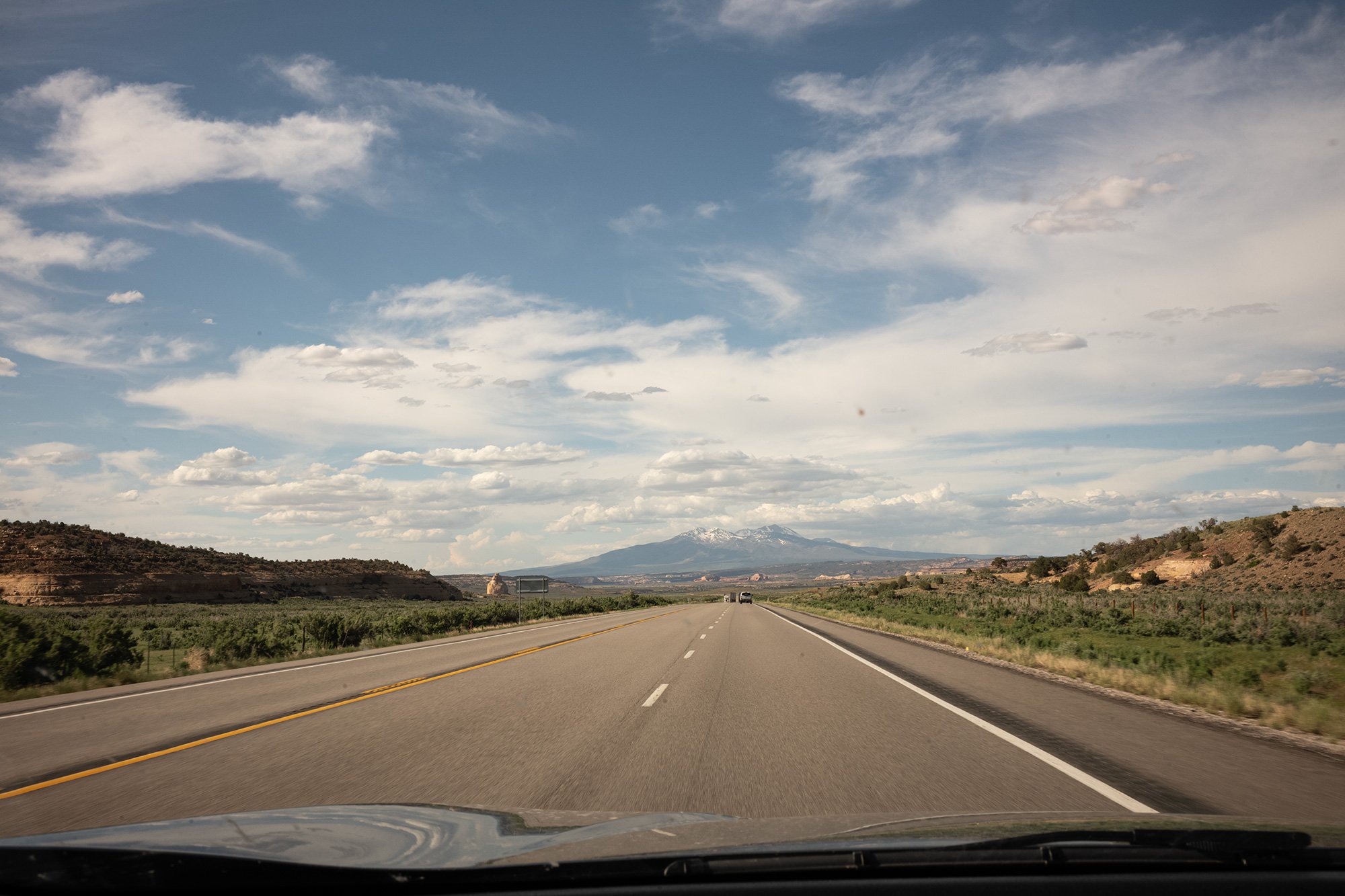
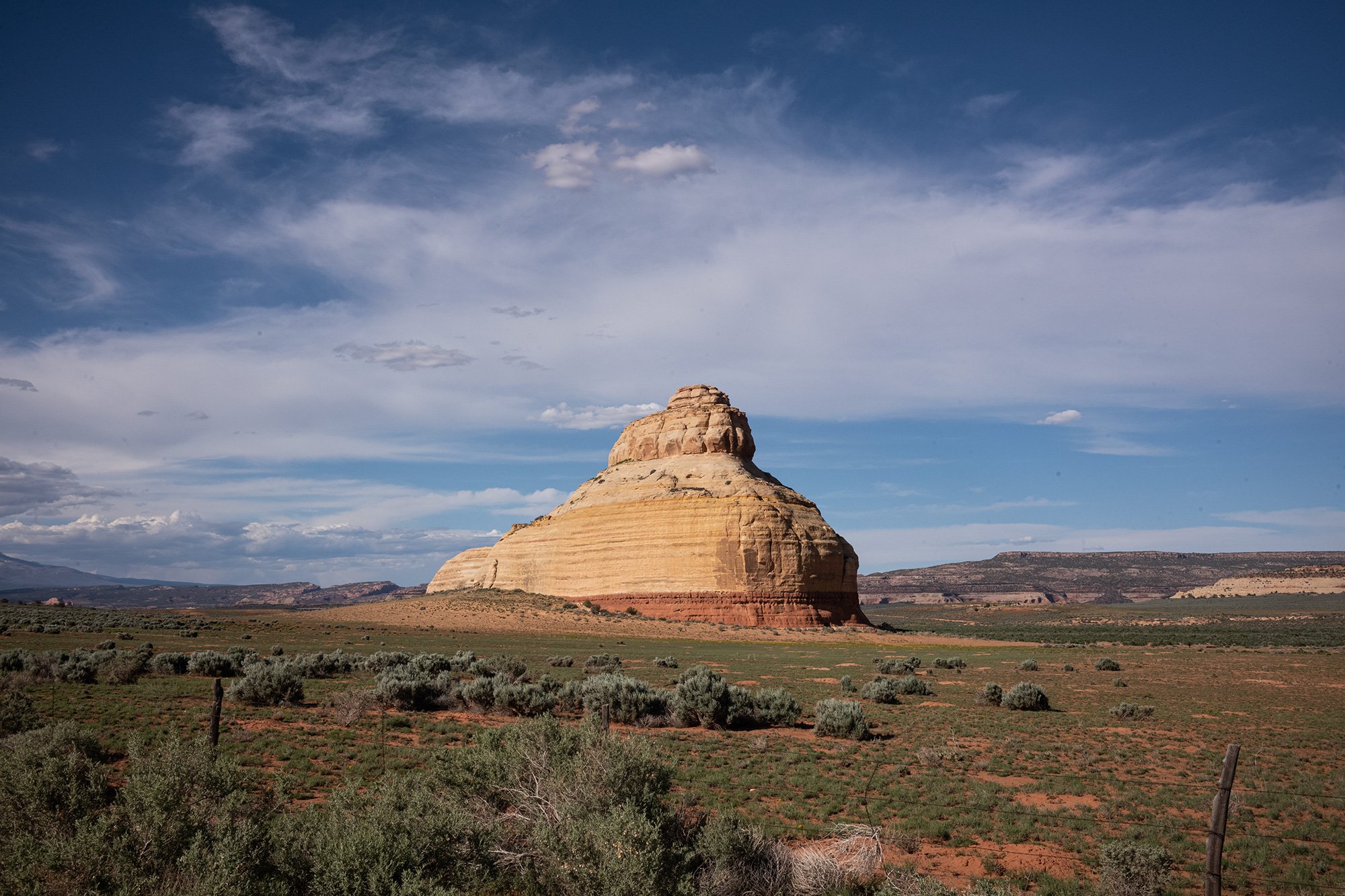
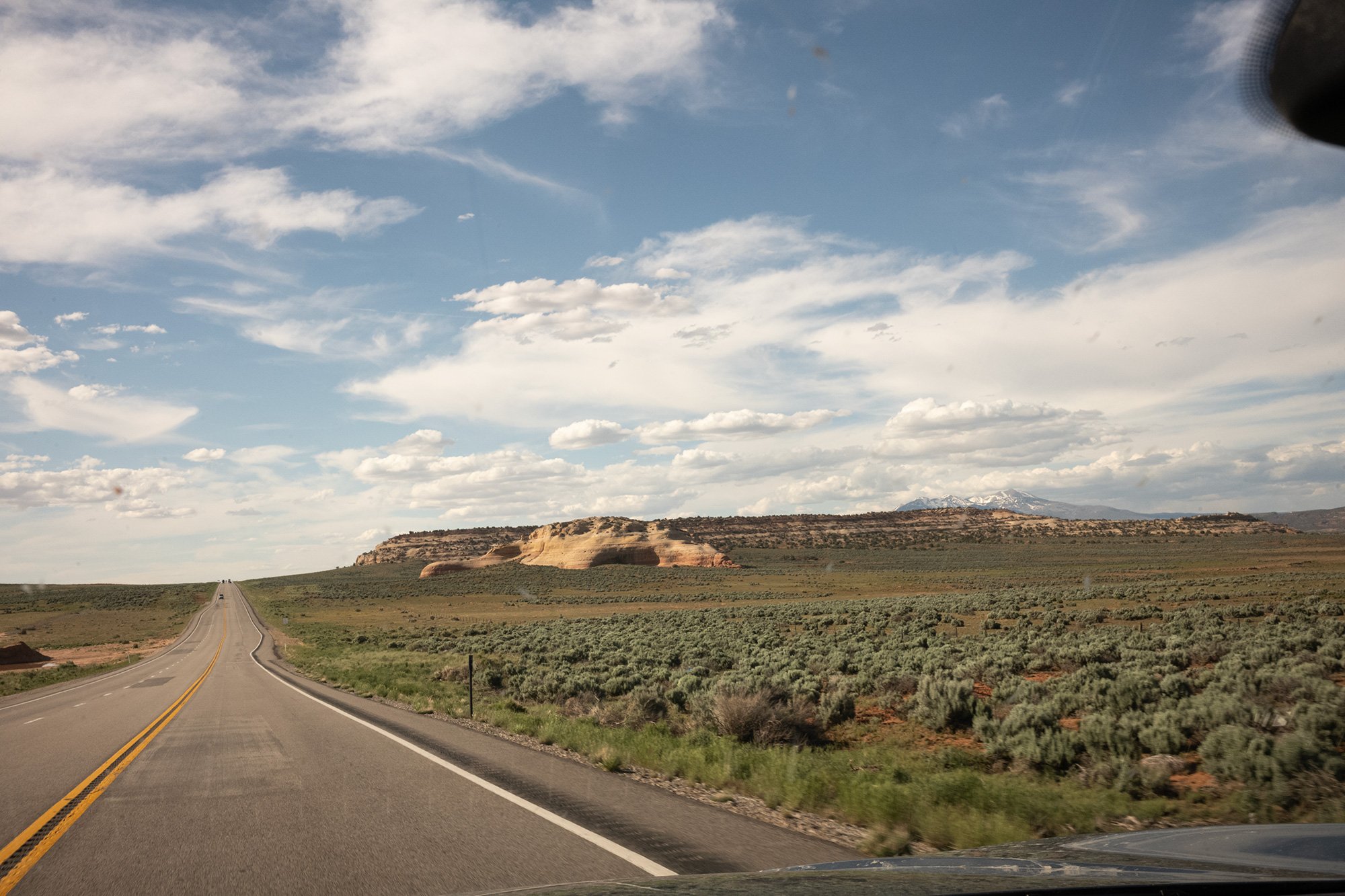
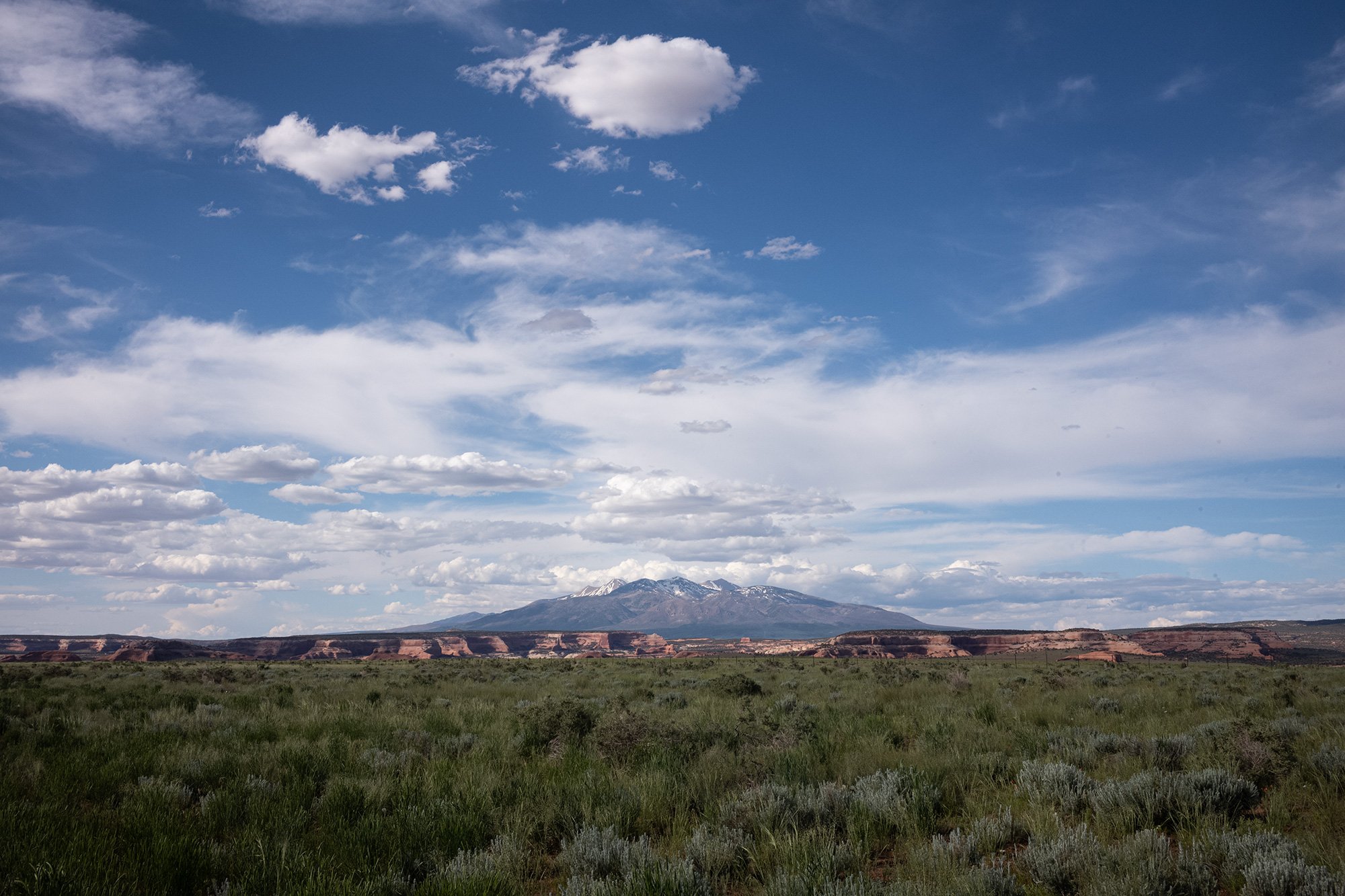
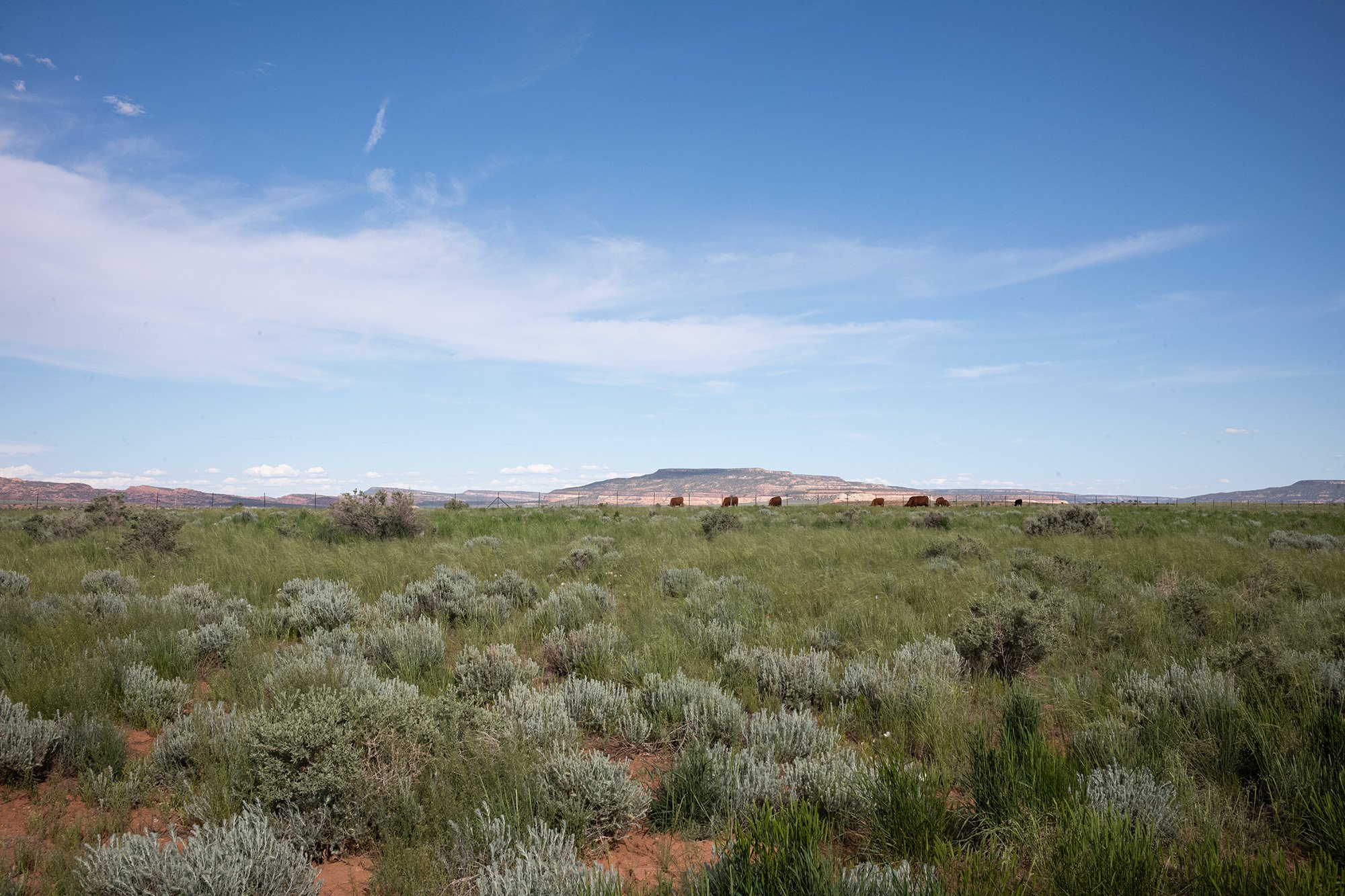
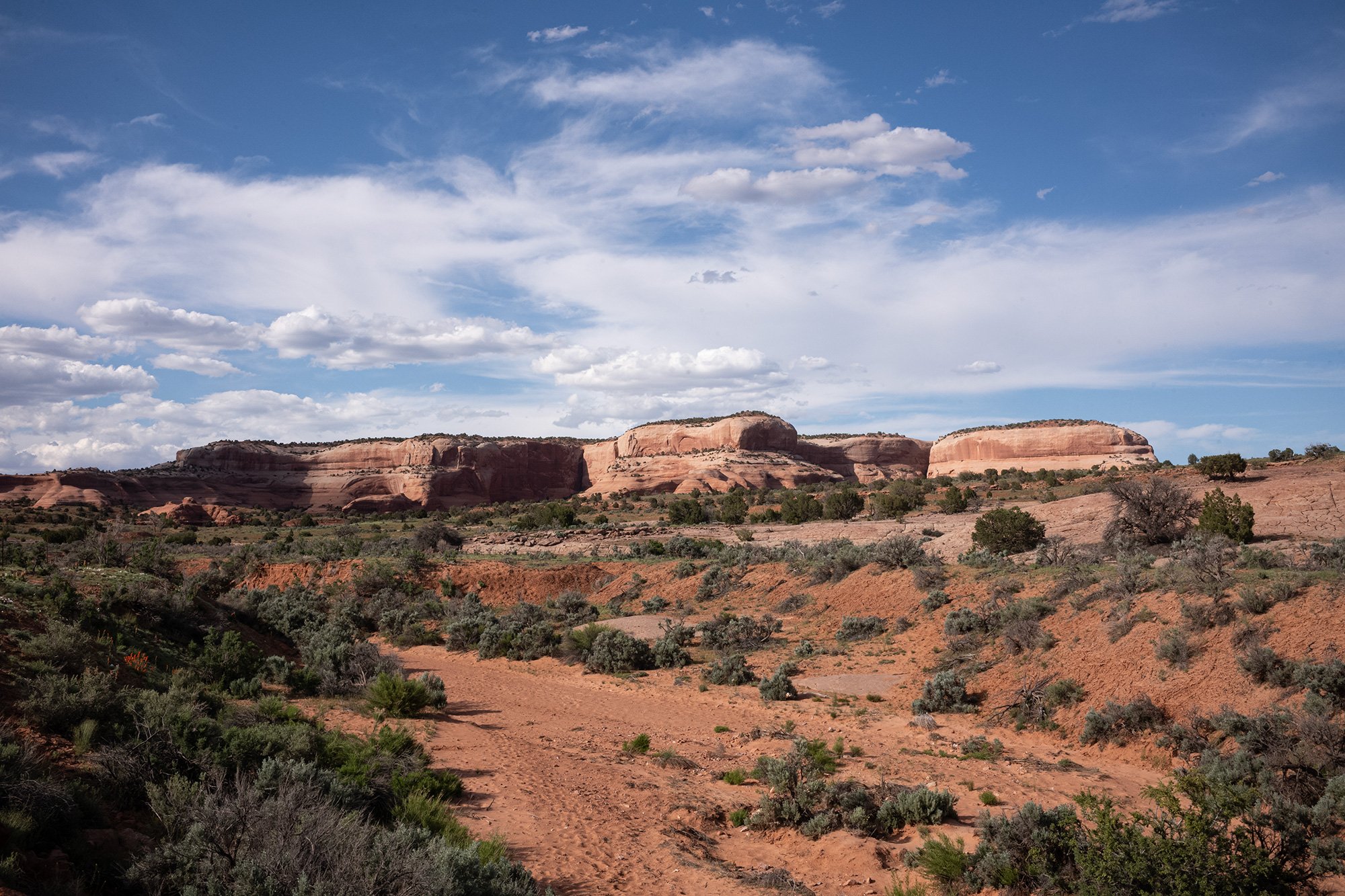


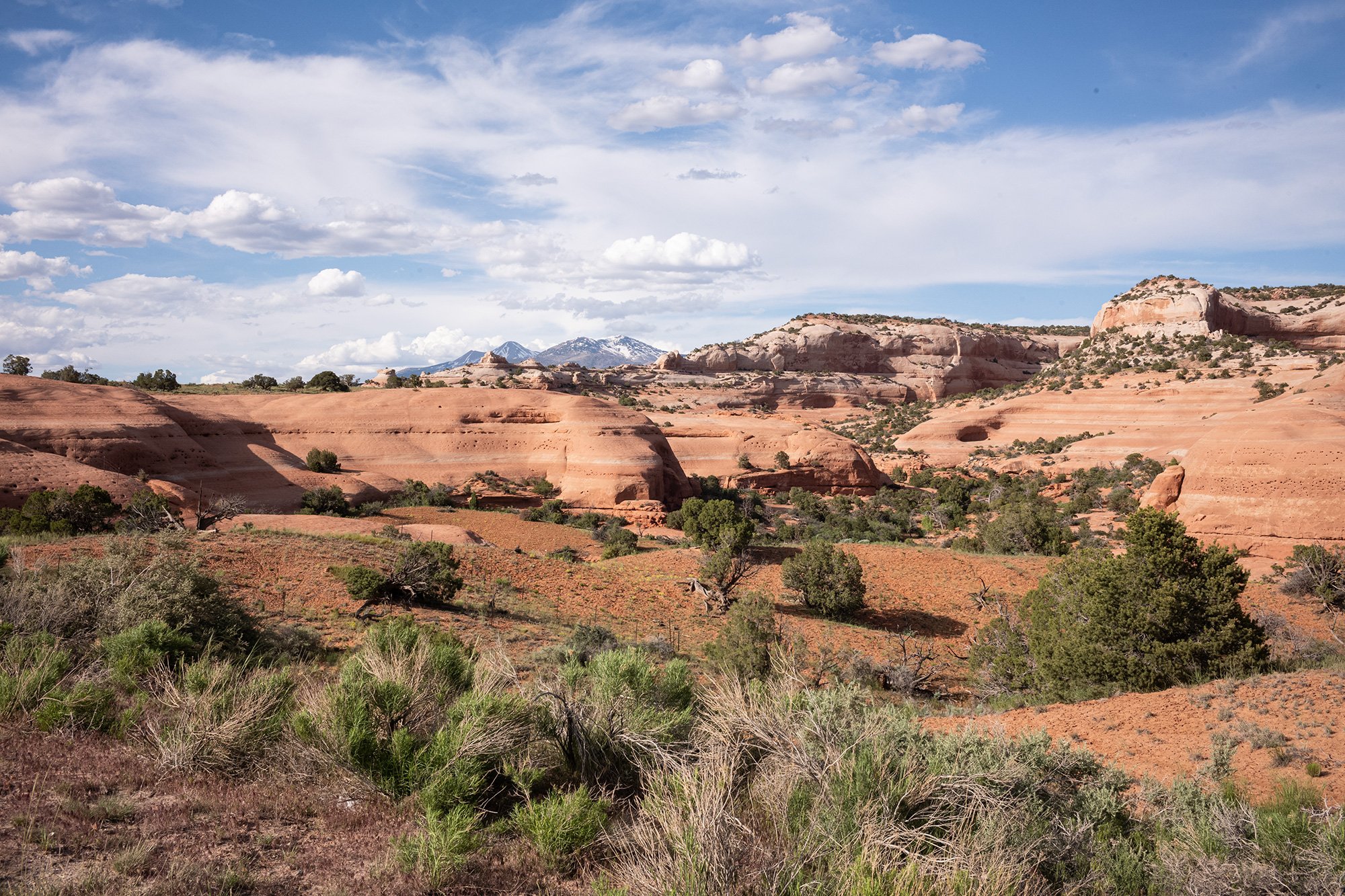
Nearing Moab the rocks become red once again and we see our first arch. A rest area sits in front and we stop to take photos and stretch our legs.
In Moab, we’re staying at The Moab Resort, practically the closest hotel to the entrance to Arches. I had managed to find a great deal on a suite, which is effectively a two-bedroom apartment.
On checking in I read that no reservations are needed to enter Arches before 07:00 and after 16:00. I look up the sunrise on my phone; it’s 05:58. I ask my aunt how motivated she feels. Our reservation isn’t until 10:00, but if we get up early we can do a sunrise hike to Delicate Arch and then come back for breakfast and to pick up my parents in time to enter the park again at our reserved time. She says she’s up for it. I’m excited to see another last-minute plan come together. I can’t wait to see the Delicate Arch for myself.
23 May 2023
🇺🇸
